#i like broccoli and bok choy and tolerate spinach
Explore tagged Tumblr posts
Text
my fatal flaw is that instead of becoming more acclimated to vegetables the more I eat them, I get fucking disgusted by them instead
#shout out to the year in high school i tried to like carrots by eating them with ranch every day#I did not . end up liking them#i like broccoli and bok choy and tolerate spinach#but if i eat them several days in a row ? i get fucking sick of them#broccoli is good if i boil them n put on butter and season them#but then it starts to feel like the eating equivalent of white noise#spinach ........... we dont talk about spinach /j#i guess its fine if u cook then n slather it in butter or sauce#like the problem is i HAVE to eat veggies with meat#i legit cannot eat them without it ...#i wish i could like them so fucking bad i hate being malnourished ...
6 notes
·
View notes
Text
I am posting this for accountability, as a reminder to myself.
Growing up, I was a picky eater. It was difficult to cajole me into eating any vegetables, and even when I'd try one, I would say it made me feel sick and then go back to not eating it. So picky!
As an adult, and especially in the past ten years, I've become more adventurous and deliberately more "grown-up" about the foods I try and the foods I like. I've discovered that I actually like a lot of vegetables that I used to turn up my nose at, like broccoli, zucchini, and spinach!
I've also discovered, though, that while there are some foods I'm still just "picky" about (I'm simply not sold on the taste of eggplant, mushrooms, or cauliflower), there are other foods that I actually for real can't eat.
I have known for a while that I'm intolerant to cabbage and anything cabbage-like (bok choy, brussels sprouts), of the "physically incapable of swallowing it" variety.
And the juice of raw tomatoes and bell peppers makes me feel sick, even though I LIKE tomatoes now (I love them in soups, when they've been cooked enough that the juice doesn't affect me).
And, okay, I'm "mildly intolerant" to spinach, meaning if I eat more than an arbitrarily small amount in a sitting I might throw it up or come close, which is a pain because I really like spinach now, especially raw in a salad or cooked in dough like spanakopita or spinach bourekas.
And, all right, recently I've discovered another mild intolerance to "dark greens" - more than an arbitrarily small amount of things like asparagus, or cucumber or zucchini with the peel on, and I'll suddenly experience the "physically unable to swallow" that I know from my cabbage intolerance.
And then today, proud of my new salad eating habits, I told my mom I would try the (lettuce plus dressing) salad she had made, and she served me a big bowlful. I'm not intolerant to lettuce, I thought in my hubris. Then just past halfway through the very delicious salad, I started gagging violently and couldn't eat more.
So anyway, turns out I'm mildly intolerant to ALL green vegetables (plus tomatoes and bell peppers).
I'm probably going to keep up with the "I'm ideologically opposed to eating salad" line because in my experience only people like my fiancee who have a personal experience of niche / weirdly specific allergies or intolerances will believe you when you say "I'm intolerant to basically all vegetables" and, also in my experience, people are a lot more tolerant of someone giving a funny quip acknowledging her picky eating than of a grown adult who can't even admit to just being picky about vegetables. But I'm writing this to remind myself so I'll know, and feel vindicated, that the vast majority of vegetables that I refuse to eat, or only eat in minuscule quantities or only when overcooked, are not because of baseless picky eating but from genuine for real eating intolerance.
#food#picky eater#eating intolerance#cw vomit mention#cw gagging mention#probably tmi#dietary restrictions#vegetables
1 note
·
View note
Text
Organic Online Vegetables Seeds - Summer

Summer Seeds

All Seeds

Spring

Fall

Winter
FAQ
Which vegetables are suitable for summer planting? Some of the vegetables that are suitable for summer planting include tomatoes, cucumbers, peppers, zucchini, beans, eggplants, and okra.These vegetables thrive in warm weather and can tolerate high temperatures. Can I use regular seeds for organic gardening? Yes, you can use regular seeds for organic gardening.However, it’s important to ensure that the seeds are not treated with synthetic chemicals and have not been genetically modified.To be sure, look for seeds that are certified organic by a reputable organization. How do I prepare my soil for planting organic vegetable seeds in summer? To prepare your soil for planting organic vegetable seeds in summer, start by removing any weeds or debris from the planting area. Then, loosen the soil with a rake or hoe and add compost or other organic matter to improve soil fertility and structure.Make sure the soil is well-draining and has adequate moisture before planting. How often should I water my organic vegetable seeds during summer? During summer, organic vegetable seeds may require more frequent watering due to high temperatures and dry conditions. Water the seeds deeply and regularly, preferably in the morning or evening to avoid evaporation. Check the soil moisture regularly and adjust your watering schedule as needed. How long does it take for organic vegetable seeds to germinate in summer? The germination time for organic vegetable seeds in summer can vary depending on the type of vegetable and growing conditions. Generally, most vegetable seeds will germinate within 7-14 days if the soil temperature is between 60-85°F and the soil is kept consistently moist.However, some seeds may take longer to germinate or may require special growing conditions. What are organic vegetable seeds? Organic vegetable seeds refer to seeds that are produced without the use of synthetic fertilizers, pesticides, or genetically modified organisms (GMOs).These seeds are grown and harvested using natural methods that promote soil health and protect the environment. Where can I buy organic vegetable seeds for summer? You can buy organic vegetable seeds for summer from online retailers, seed catalogs, or your local garden center.Look for companies that specialize in organic and non-GMO seeds and offer a wide variety of vegetable seeds suitable for summer planting.
Organic Seeds
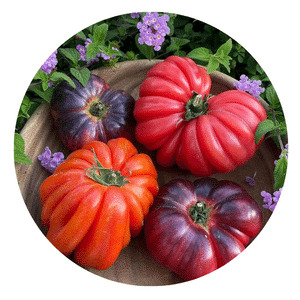
Tomato
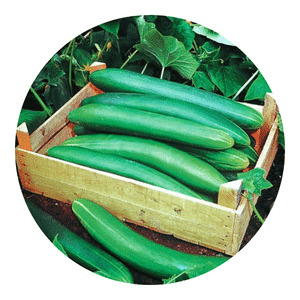
Cucumber

Pepper

Bean

Zucchini
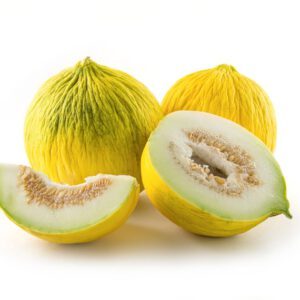
Melon

watermelon

Corn
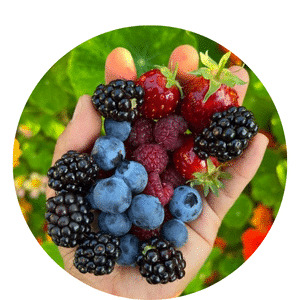
strawberry

Pumpkin
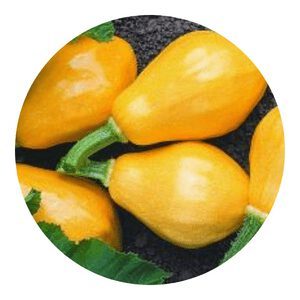
Squash
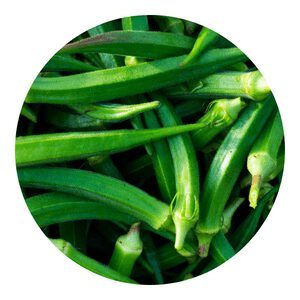
Okra

Fertilzer
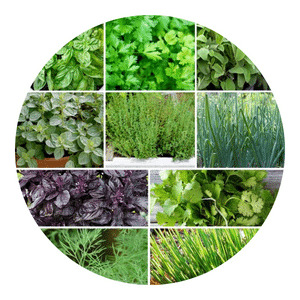
Herbs

Lettuce

Eggplant
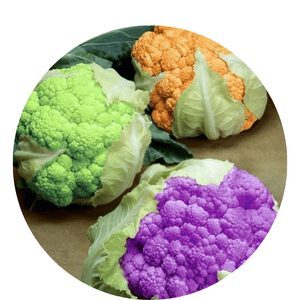
Cauliflower
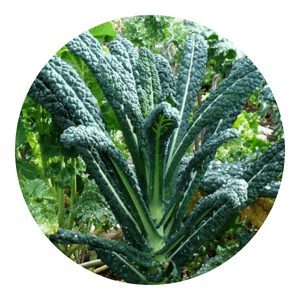
Kale

Carrot

Artichoke
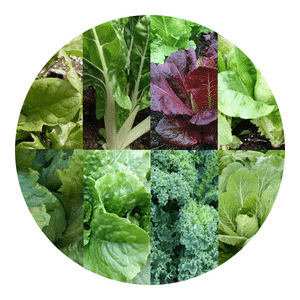
Greens
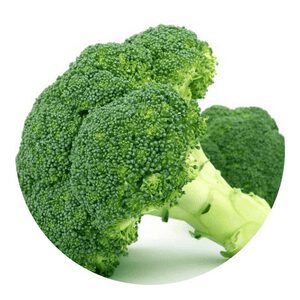
Broccoli
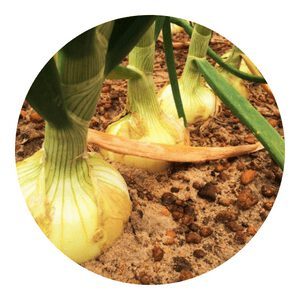
Onion
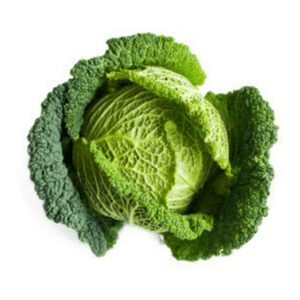
Cabbage

Bok Choy
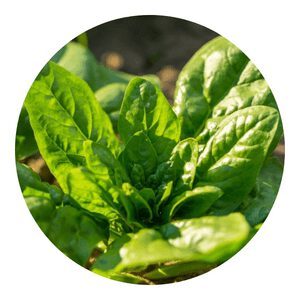
Spinach Helps Us Grow - Share If You Like Facebook Twitter LinkedIn Pinterest Reddit WhatsApp Read the full article
0 notes
Text
AAAAAAAAAAAAAAAAAAAAAAAAAAAAAAAAAAAAAAAAAAAAAAAAA
W H Y
WHY IS THERE ALWAYS SOMETHING NEW I’M LEARNING MY PARENTS FUCKED UP WHEN PARENTING ME??? W H Y ? i JUST WANT TO LIKE THEM, WHY IS THIS A NEVERENDING STREAM OF REASONS TO BE PISSED???
*deep breath*
So
SO
My family has mocked me my entire life for being a picky eater. Nonstop. They nicknamed me the “starchitarian” to mock my eating habits. And I was talking about it with my partner and how I didn’t eat a lot of veggies as a kid when I realized something. My parents introduced me to very very very VERY few vegetables as a child. They introduced me to tomatoes, mushrooms (which are technically a fungi), carrots, peas, broccoli, and cauliflower. No cucumber, no zucchini, no squash, no bell pepper, no radish, no celery, no fennel, no lettuce, no spinach, no sweet potatoes, no asparagus, just those six vegetables out of SO MANY. And then they had the GALL to get angry at me when I didn’t like tomatoes or mushrooms?? I LOVED broccoli, peas, and cauliflower, and I actively ate one of those small packs of carrots a day. I really wanted to like tomatoes and tried them frequently, but the texture and taste killed me.
So they were mad because I only dared like 4 out of their 6 vegetables??? I ate any meat except fish that was put in front of me, all rice and potato dishes, I loved fruit and nuts like nothing else, and I understand that there were problems that arose from me not liking cheese, milk, and creamy products, but like.....I still drank milk. I loved vanilla steamers and would tolerate strawberry milk, the texture of it just still kills me. I wasn’t that bad when it came to being picky???? I literally just had preferences. Wtf.
And you know what??? When I grew up and had more control over my diet, I fell in love with vegetables. I love bok choy, brussel sprouts, bamboo shoots, and almost every vegetable I listed above. I still don’t like mushrooms in general, I struggle with cheese, and creamy products kill me. But those are preferences. I wasn’t that picky of an eater, I was just exposed to almost no options as a child.
And when I was seven and my mom was hit by a car and temporarily incapacitated, I made my brother and I’s lunches and dinners. So yes, as a child who was told not to try to cook solo, I went for microwave and oven meals. I went with whatever my parents stocked in the freezer, I went for guarantees because my brother was bitchy about his food not being what he wanted, and I went for familiars. I didn’t try to work with vegetables because I had never seen my parents do it. I had no clue how to cook them or what dishes had them that my brother and I would like. And, for the record, a first grader was in charge of packing lunches for themself and their brother. A power I never abused. Lunches were sandwiches, a fruit or vegetable depending on what we had in the fridge, and either chips or a small dessert. I never put in extra sweets or chips, I took care of my brother and I.
My family would go on to mock my diet for years. Any time something bothered my mouth, my mother would blame it on me having too many sweets. They made it about rights and wrongs: you were wrong for having sweets and salties and starches and carbs. My mother, who was overweight but not dangerously so, constantly scorned her body and would talk about not being beautiful, a habit my father picked up when he became overweight, and they would become rude about my brother’s body when he became a bit chubby too. It was one of the ways I was expected to be perfect: be slim but don’t develop an eating disorder because that’s bad. I went on a short diet when I was fourteen because I was five pounds (basically water weight) overweight, something my mother encouraged, and lost them and stopped. I was so lucky. But I think that if I had told my mom that I lost that weight and she praised me, I would have kept doing it. Because if that was “all it took” to gain their affection, I would have done it in a heartbeat.
I struggled with intense nausea and with eating when problems with school happened in fourth and fifth grade, but that was nothing compared to when I was abused by my friend in high school. I developed disordered eating that my family perpetually worsened over the course of a year, and would still struggle with it during the next six months to the point that eating three meals a day was an accomplishment. But when I was trapped with my family during the pandemic, my eating crashed worse than it ever had. I was dealing with gender dysphoria, horrible PTSD, anxiety, depression, and constant fear for my partner who was living with their abusive parents. I was desperately trying to fix my relationship with my family, going the extra mile, and constantly getting my hopes up only to have them destroyed day after day after day. I struggled with eating, especially with the comments they made. How much easier it was to cook for the family when I was gone. How happy they were when I made a microwave meal for myself so they could have a homemade one. How they would eat any food I made for myself. How they made snarky comments about how little I ate. How they would yell at me for being in the kitchen or just existing at the wrong time because how dare I intrude while they cooked.
I would be proud if I ate once a day. I struggled with eating sweets or chips even though they soothed my anxiety enough that a small amount could mean I would relax enough to have a full meal, but I struggled with doing that because if it didn’t work, all I would eat was unhealthy food and that was bad for me and would make me fat and then my family would be disappointed in me. They directly said that, between overweight and underweight, they would rather I be underweight. And I became underweight. I would dry heave multiple times a day, got lightheaded consistently and would quickly become faint, and became physically and mentally weaker. I finally left and went to live with my partner, whose brother apparently saw me early on and was seriously concerned for my health. My partner, knowing a lot about eating disorders, admitted to me that I would have probably ended up in the hospital soon at the rate I was going. It terrifies me to this day how horribly that could have gone.
I still suffer from disordered eating a year later, but three meals a day is usually the standard. Sometimes, I can’t do that, but my partner is always happy to help me through the meal. They don’t mock me or my eating habits, and instead support me in eating whatever I can. But that mockery of me as a child for being a picky eater because of factors beyond my control eventually built up into intense disordered eating. Use your words carefully, parents. Because they stay with your kid.
#tw: eating habits#tw eating habit#tw: eating mention#tw eating mention#tw eating#tw: eating#tw: eating problems#tw eating problems#tw: disordered eating#tw disordered eating#don't worry about responding#family rant#rant#long rant#just grumpy#GRUMP GRUMP GRUMP
3 notes
·
View notes
Note
Lol I'm in hell because alliums exist already. Eating them causes an effect in the digestive tract that feels the way gravel in the garbage-disposal sounds. But neither I nor anyone I know with the same allergy is affected by garlic, and garlic alone. Any of your plant nerd friends know why?
In general, if you’re allergic one plant, you’re probably some degree of allergic to it’s close relatives, so it’s definitely a good idea to google the relatives of any plant that disagrees with you.
As for the alliums thing I’m not sure- I know people who are allergic to Onions AND Garlic, Garlic but not Onions, Onions but not garlic and so on- but this is kind of the pattern with plant allergies. I’m mildly allergic to tomatoes and eggplant, but tolerate most peppers, and can eat potato by the pound. My best guess is that there is a *specific* chemical compound that’s bothering you and how much of it there is per plant can vary by species, breed, farming technique, storage and cooking technique.
Some plant groupings I’ve noticed people having issues with before, if it will help anyone:
Alliums: Onions (red, yellow, white, whatever), shallots, scallions/green onion, garlic, garlic greens, chives and Leeks!
Nightshades: Eggplant, Tomato, Peppers (But not black pepper, which is an unrelated plant), Paprika and Potatoes are all domestic versions of Deadly Nightshade.
Brassicaceae: Argula, Broccoli, Cabbage, Cauliflower, Kholrabi, Brussel Sprouts, collards and Kale, are all breeds of the same plant, Brassica Oleracae. Also in this family are: Trunip, Bok Choy, Rapeseed/Canola*, chinese cabbage, Rapini, Fild Mustard, Mustard Spinach, tatsoi and Yellow Sarson (B. Rapa), common Radishes and Horseradish. This isn’t a particularly common allergen, but they are all fairly bitter so if you don’t like the taste of one- you probably won’t like the others. It’s worth re-trying them every few years, as your tastbuds change over time.
Rosacae: Apples are close relatives of Roses and a much more common allergen than you might think! Apples, pears, quince, roses (including rose-hip teas) and loquat are all in this family.
Prunus: If it’s got a big, hard pit in the middle it’s probably a stone fruit! This family includes: Peaches, apricots, nectarines, plums/prunes, Cherries and Almonds! As a side note: Do NOT crack open the middle of the seeds/stones to eat the nut meat inside, as these all contain varying levels of Cyanide, and it’s very easy to kill yourself eating them. There are some SPECTACULARLY unethical people out there selling apricot pits as some kind of health food, but it’s not been approved by any proper research or oversight body, and even eating a handful of them is enough to kill you. DO NOT. YOU WILL DIE, AND IT WILL HURT THE WHOLE TIME YOU ARE DYING.
456 notes
·
View notes
Text
Diabetic Diet and Guidelines

cinnamon for diabetes
What exactly is diabetic diet? Is presently there only 1 or many? Just what does some sort of diabetic diet program consist of? All of these concerns and more will possibly be responded to in this content.
cinnamon for diabetes
A diabetic eating habits will be an eating plan as well as diet plan recommended for folks with diabetes mellitus in order to assist them in maintaining their blood sugar.
Any diabetic diet is scientifically called Medical Nutrition Remedy. Its rich in vitamins and minerals, low in excess fat and also calories and rich in greens, fruits and whole spore. In this diet, individuals are generally encouraged to have moderate sums of food and adhere to regular mealtimes.
The value of ingesting dietary fibers is emphasized an ideal weight loss plans and it is also told me carbohydrates eaten together with linens results in a new lower glycemic reputation (level of sugar inside blood) than the same level of carbohydrates otherwise consumed only.
It has been proposed that in between 40 to be able to 65% regarding calories really should be obtained from glucose, although the American Diabetic Relationship in 1994 suggested 62 to 70%.
This specific last mentioned recommendation has been recently criticized simply by various men and women who rather canvassed the low carbohydrate diet. Rich K Bernstein is 1 involving such individuals. His or her own diet regime limits carb intake to be able to 30 gr per day in addition to physically demanding muscle building exercise along with frequent blood glucose tracking.
Futurologist Ray Kurzweil who also was earlier diagnosed using diabetes likewise promoters any carbohydrate intake of one particular sixth of total everyday caloric load.
Taking some sort of "cue" from the truth that a diet full off dietary fiber has already been shown to be quite beneficial, studies have recently been manufactured on vegan eating plans (diets of vegetarians). These kinds of research shows that such diet program not merely also help for you to lower hemoglobin A1C in addition to LDL quantities but in addition advanced glycation ending goods. Glycated end tools are necessary protein or lipids which usually possessing been exposed to all kinds of sugar grow to be glycated (covalently cemented using a sugar molecule with out the prevailing action connected with an enzyme).
Within the uk however, there is the Take in Properly plate which is usually the countrywide food information designed to aid BRITISH citizens have a balanced balanced diet. It is definitely using the basic five foodstuff groupings and the manual stipulates the proportion of a new person's plate that ought to be created up of each meal party.
Thus Fruits as well as vegetables - 33%, Loaves of bread, rice, potatoes, plata and also other starchy foods : 33%, Milk and additional dairy food - 15%, Various meats, species of fish, egg, beans along with other nondairy sources associated with protein - 12% in addition to foods and refreshments large in fat or carbohydrates - 7%.
It is actually popular that the next group nevertheless should become whole grain-that will be complete wheat bread, brown almond etc. and not sophisticated embryon like white loaves of bread as well as white rice. Just where this is certainly so and impact in mind how the eating habits falls within the boundaries of the recommended arrangement regarding between 40 to help 65% calorie to end up being obtained from carbs, the item can be said which it is also an excellent diet for diabetics.
Furthermore the United States Section of Cultivation (USDA) have got the MyPlate diet guidebook which replaced typically the USDA's pyramid guide in August 2, 2011. It can be generally a plate prepare demanding that 30 percent of your meal be grains, 45 percent vegetables, 10 pct fruit, and 20 per-cent protein. A few dairy (product), such as a a glass of milk or the natural yoghurts cup is additionally included.
This treatment solution was adjusted by the Harvard University of Public Health inside their Harvard Healthy Eating Platter. Their revision features one much more percentage increase of fruit and vegetables over fruits whilst as well balancing healthy protein and also grains as equal groups in the plate.
On often the other hand the Us Diabetic Association recommends that you simply create your own area through these simple methods;
"Using your current dinner dish, put any line lower the middle of home plate. Then on one aspect, slice it again thus you could have three portions on your platter.
a single. Fill the largest segment with non-starchy vegetables for example:
spinach, carrots, lettuce, shades of green, cabbage, bok choy natural beans, broccoli, cauliflower, tomato plants, vegetable juice, salsa, red onion, cucumber, beets, okra, mushrooms, peppers, turnips
2. At this point in one of the actual small sections, placed grain and starchy food these as:
whole grain loaf of bread, like whole wheat or even rye whole fiber, high-fiber cereal cooked cereal such since oatmeal, grits, hominy or perhaps cream of grain grain, pasta, dal, tortillas cooked properly beans and peas, this kind of as pinto beans or maybe black-eyed peas potatoes, environment friendly peas, corn, lima espresso beans, sweet potatoes, winter lead capture pages low-fat crackers, snack debris, pretzels and light fat free popcorn
several. Then in the particular other tiny section, fit your necessary protein such while:
chicken or poultry not having the skin fish for instance tuna, salmon, cod as well as catfish other seafood including shrimp, clams, oysters, crab or mussels lean reduces of beef and put such as sirloin or even pig loin tofu, ovum, low-fat cheese
Add some sort of serving involving fruit, a new serving connected with dairy or perhaps both as the meal approach allows.
Pick healthy fat in a small amount. For cooking food, use natural skin oils. For green salads, some wholesome additions usually are nuts, plant seeds, avocado along with vinaigrette.
To finish your meals, add a reduced calorie beverage like water, ill-flavored teas or coffee".
In phrases of dish times, as a diabetic, it has been explained in Daughters ken, He and Judd that typically the length of time just before meals that one ought to inject insulin would count on the type associated with insulin one is including. Whether it is extended, medium, or quick operating insulin.
For instance just where a very low blood carbs and glucose reading just before going to bed of below 6 milimoles per liter (108 mg/dL) is evidenced, it is usually suggested the fact that patient must take some longer working carbohydrate before going in order to bed to prevent evening hypoglycemia (abnormally low degrees regarding blood sugar).
Currently so far as the don'ts move, seeing that concerns alcohol, this is recommended that folks having diabetes who acquire insulin or other treatment these kinds of as sulphonylureas should not necessarily have alcohol on a great empty tummy. The purpose for this is that will liquor interferes with glycogenesis (the means of storing sugar and carbohydrates in the form involving often the polysacharride called glycogen) within the liver and many drugs prevent hunger pangs. This in addition to be able to weakened memory, judgement in addition to attention caused by a few drugs can cause hypoglycemia.
Permit us now take into account several specific diets. There are numerous as well as all have at a single time or other been incredibly popular. These continue to appreciate varying degrees of appui, though some more as compared to other folks.
The low Carbo diet
This specific diet advocates in which the removal of carbohydrate food from the standard diet plan could help reverse diabetes. Next this removing, the diet regime would consist of oily foods such as insane, hybrid tomato seeds, meats, fish, essential oils, as it, avocados, olives and also fresh vegetables. Fat would turn into the major energy supply and insulin level of resistance relevant complications would decrease.
Often the high Fiber diet
Demonstrating better results than the actual American Diabetic Association advised diet, this specific diet is claimed to control blood sugars levels with all the same efficiency as mouth diabetes medications.
The Paleolithic diet
Premised on what our old individual ancestors likely had through the Paleolithic age along with as a result that they enjoyed diabetes (among other diseases) free well being, the Paleolithic diet is made up mostly connected with lean various meats, nuts and fruits. Lab tests show that this diet program improves glucose tolerance throughout humans with diabetes including humans with ischemic cardiovascular disease and glucose intolerance.
The actual Pritkin diet
Is produced up generally of fruits, whole grains, veggies in addition to the like. It is definitely high in fiber as well as carbohydrates. It bills it is high carbohydrate articles nonetheless by including workout because part of its agreed program.
The G. I actually. eating habits
Aims at reducing the glycemic index associated with a persons diet plan along with a view to aid the user inside the command of his/her diabetes. In this article multi-grain and sourdoughs, beans and whole grains- foodstuff that are converted a lot more slowly for you to glucose with the blood stream be replacement for others just like whitened bread and taters baked a certain approach.
One should definitely not furthermore forget the vegan diet regime which has an capacity to increase glycemic management similar to the MUNCUL diet.
The Newcastle Diet regime
Lastly it is well worth mentioning the Newcastle diet program. Although strictly communicating, that may not be the particular sort of eating habits just one continues with after the first objective has been achieved, it is worth bringing up.
The diet is based around people who seek to help bring their particular blood glucose levels back to standard and so formally, "cure" their diabetes. The diet plan is actually a liquid one made up of carbohydrate, protein, fat, vitamin supplements, minerals and trace factors. It provides 600 calorie consumption per day and is supplemented by three or more portions regarding non-starchy greens, thereby delivering total fat laden calories to 700 a day.
The particular diabetic fighting aspect of the diet plan is premised on typically the fact this its minimal calorie base, results often the individual losing weight. From the belly, this implies that the liver and also pancreas are less back logged together with fat and since such the pancreatic will be more effective in creating insulin whilst the lean meats is way better able to behave to it.
1 note
·
View note
Text
How to Get Enough Calcium Without Dairy
New Post has been published on http://healingawerness.com/news/how-to-get-enough-calcium-without-dairy/
How to Get Enough Calcium Without Dairy
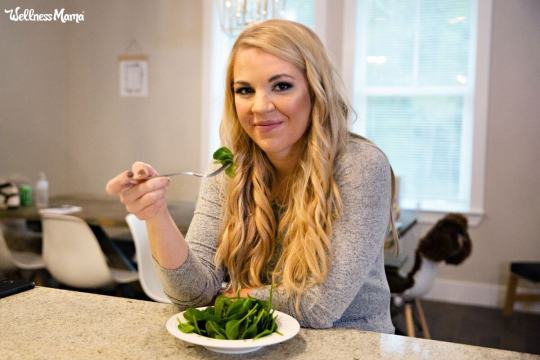

Table of Contents[Hide][Show]
When our third child started to eat solid foods, we found out that he had a pretty severe dairy allergy. It started with bad gas and mucousy stools, then progressed to skin reactions and even worse digestive problems.
Food allergies are common in babies born early, and my son was five weeks premature (that whole story and my other birth stories here).
In response to this new information, I cut dairy out of my diet because I was still breastfeeding my son. Even though I was only eating raw and organic forms of dairy before, I found that I felt much better, I lost weight more quickly, and had smoother skin in response to the dietary change. While I was sad to give up my favorite raw cheeses, was glad to know that my body didn’t tolerate dairy well, either.
While the baby and I felt better without cow’s milk products, there was a new thing to be concerned about: How will we get enough calcium without dairy?
How Much Calcium Do We Need?
Calcium is the most abundant mineral in the human body. As we know, it is vital for strong bones and teeth, and it’s also important for muscle development, healthy blood pressure, and skin health.
The recommended daily intake is 1,000 mg of calcium for men and women, and those calcium requirements rise to about 1,200 mg for older adults. Tracking your intake can be tricky because calcium isn’t always properly absorbed — meaning we generally might need to consume more than we think.
For reference, calcium from dairy products is about 30-35% bioavailable. Other calcium-rich foods that are more absorbable than dairy include fish with bones and cooked veggies like bok choy, kale, and broccoli.
Some foods are often suggested as a good dietary source of calcium but are not as absorbable. For example, spinach contains only around 5% of bioavailable calcium.
Middle-of-the-line options are edamame and soy milk (24% bioavailable), white beans (22%), and sesame seeds (21%).
Bottom line: When tracking your calcium intake, it’s important to consider how easily our bodies can absorb the nutrients in different food sources.
Vitamins That Help the Body Absorb Calcium
Another factor to consider in the bioavailability of calcium is the other vitamins you’re getting in your diet.
Vitamin D is required for the proper absorption of calcium, with one study showing that people who were deficient in vitamin D only absorbed 14% of the calcium from food, versus 58% absorption from those with adequate levels. Fortunately, many natural food sources of calcium (like fatty fish) are also good sources of vitamin D.
It’s also important to get enough magnesium, as it helps to convert vitamin D into its active form. Magnesium is also used in the creation of the hormone calcitonin. Calcitonin keeps calcium in the bones and not in the bloodstream, lowering the likelihood of osteoporosis, some forms of arthritis, heart attack, and kidney stones.
Keep in mind though that magnesium must be in the proper ratio to be used correctly. It’s important to be mindful of getting calcium from synthetic sources that are low in magnesium.
Vitamin K is also important for calcium synthesis, as it helps keep calcium in bones and out of arteries and muscles. Great sources include dark leafy greens, grass-fed butter, chicken livers and natto (a form of fermented soybeans).
Aside from getting enough of these nutrients, you may also want to consider limiting the amount of grains you eat. Grains are high in phytic acid, which can inhibit proper calcium uptake.
The bottom line: Calcium is ineffective without magnesium, vitamin K, and vitamin D. Eating too many grains can make calcium absorption more difficult as well.
Why Calcium Supplements Are Not the Answer
Since it seems so complicated to get enough calcium without dairy every day, you might be tempted (like I was) to try calcium supplements. However, it seems like that’s not a great choice. (Here’s why.)
Calcium supplements ups your risk of ingesting too much calcium. This can lead to increased risk of kidney stones, heart disease, and more.
As Chris Kresser explains, supplemental intake of calcium can be problematic, but dietary intake of calcium is considered safe and healthy:
Beyond being ineffective for bone health, calcium supplements are associated with some pretty serious health risks. Studies on the relationship between calcium and cardiovascular disease (CVD) suggest that dietary intake of calcium protects against heart disease, but supplemental calcium may increase the risk. A large study of 24,000 men and women aged 35–64 years published in the British Medical Journal (BMJ) in 2012 found that those who used calcium supplements had a 139% greater risk of heart attack during the 11-year study period, while intake of calcium from food did not increase the risk. A meta-analysis of studies involving more than 12,000 participants also published in BMJ found that calcium supplementation increases the risk of heart attack by 31%, stroke by 20% and death from all causes by 9%.
To be safe, calcium should be consumed from real food sources and not synthetic supplements or artificially fortified foods, like orange juice (where the synthetically added amount of calcium just settles to the bottom of the carton anyway).
Non-Dairy Sources of Calcium
While dairy is known to be a good source of calcium, there are many people who are lactose intolerant, allergic, or otherwise sensitive to dairy. In fact, it is estimated that 65% of the human population has a reduced ability to process dairy beyond infanthood.
Fortunately, there are lots of nutritious ways you can get calcium without dairy. Here are some of the best sources of calcium — and they’re all budget-friendly!
Bone Broth
Bone broth is a great source of calcium and many other minerals, and it’s so easy to make (but if you’re looking for a store-bought version, I recommend this one!) Broth made from healthy bones also contain amino acids that are great for other areas of your health, including digestion, skin, nervous system and joints.
Broth can be made from chicken, beef, lamb, bison, or even fish bones for just pennies a cup. Slow simmering the bones for long periods is best, as it allows the calcium and other minerals to dissolve into the water. As the Weston A Price Foundation puts it:
Science validates what our grandmothers knew. Rich homemade chicken broths help cure colds. Stock contains minerals in a form the body can absorb easily—not just calcium but also magnesium, phosphorus, silicon, sulphur and trace minerals. It contains the broken down material from cartilage and tendons–stuff like chondroitin sulphates and glucosamine, now sold as expensive supplements for arthritis and joint pain.
Fish With Bones
Fatty fish, especially those with the bones still intact, contain an impressive calcium content, and absorb easily. Canned fish like salmon and sardines are an easy and inexpensive way to get your fill, since the bones become soft and edible during the canning process. Just be sure to buy BPA-free tins and cans whenever possible!
I know, you might have just wrinkled your nose in disgust at the thought of eating whole sardines, but as Diane of Balanced Bites so perfectly put it:
Y’all need to put your big boy or girl pants on, get a tin of wild sardines, grab some sea salt and lemon or hot sauce, and DIG IN.
One six-ounce serving of canned wild salmon has over 110 milligrams of absorbable calcium and canned sardines rank about the same (or higher). Since these foods are also a good source of vitamin D, they enhance digestion of the calcium and make it more usable.
(If you’re curious, I get my salmon and other seafood from Vital Choice, and sardines from Thrive Market (the Thrive Market brand).
Dark, Leafy Greens
Dark leafy greens are another great dietary source of calcium and are probably your best bet if you’re vegan. However, not all leafy greens are created equal. Collard greens, turnip greens, bok choy, kale, and broccoli all ranked high as absorbable sources of calcium.
Dark leafy greens are also great sources of folate, vitamins A, C, E and K, and B-vitamins. Jonathan Bailor, author of The Calorie Myth, is fond of saying that if you make no other changes in your diet, you will see positive results just from adding a few extra servings of green leafy vegetables a day.
If you’re looking for dietary program to follow that doubles (or triples?) your veggie intake, I highly recommend the Wahls Diet Protocol because of her emphasis on vegetables en masse.
Getting Calcium… Without Dairy
Whether you’re allergic to dairy or just trying to avoid it for your own personal health reasons, there are plenty of ways you can get enough calcium without dairy. Supplementing is not necessary! Just make an effort to eat plenty of calcium-rich foods like broth, fish with bones, veggies (especially the green leafy kind), and other healthy sources of fats, protein, and probiotics as part of a varied diet.
While the above suggestions worked great for my family and me, keep in mind that I’m not a doctor and can’t tell you what your individual needs are. Be sure to check in with a health professional to get your nutrient levels checked and to discuss the best calcium sources for you.
This article was medically reviewed by Dr. Lauren Jefferis, board certified in Internal Medicine and Pediatrics. As always, this is not personal medical advice and we recommend that you talk with your doctor or work with a doctor at SteadyMD.
Do you eat dairy? Do you try to get your calcium in other ways? Share below!
Sources:
Chesnut III, C. H., Silverman, S., Andriano, K., Genant, H., Gimona, A., Harris, S., … & Moniz, C. (2000). A randomized trial of nasal spray salmon calcitonin in postmenopausal women with established osteoporosis: the prevent recurrence of osteoporotic fractures study. The American Journal of Medicine, 109(4), 267-276.
Curhan, G. C., Willett, W. C., Rimm, E. B., & Stampfer, M. J. (1993). A prospective study of dietary calcium and other nutrients and the risk of symptomatic kidney stones. New England Journal of Medicine, 328(12), 833-838.
Hsu, D. J., Lee, C. W., Tsai, W. C., & Chien, Y. C. (2017). Essential and toxic metals in animal bone broths. Food & Nutrition Research, 61(1), 1347478.
Lansdown, A. B. (2002). Calcium: a potential central regulator in wound healing in the skin. Wound repair and regeneration, 10(5), 271-285.
Lönnerdal, B. O., Sandberg, A. S., Sandström, B., & Kunz, C. (1989). Inhibitory effects of phytic acid and other inositol phosphates on zinc and calcium absorption in suckling rats. The Journal of nutrition, 119(2), 211-214.
Lucas, A., Brooke, O. G., Cole, T. J., Morley, R., & Bamford, M. F. (1990). Food and drug reactions, wheezing, and eczema in preterm infants. Archives of disease in childhood, 65(4), 411-415.
Malde, M. K., Bügel, S., Kristensen, M., Malde, K., Graff, I. E., & Pedersen, J. I. (2010). Calcium from salmon and cod bone is well absorbed in young healthy men: a double-blinded randomised crossover design. Nutrition & metabolism, 7(1), 61.
on Diet, C., & National Research Council. (1989). Minerals. In Diet and Health: Implications for Reducing Chronic Disease Risk. National Academies Press (US).
Polonsky, T. S., McClelland, R. L., Jorgensen, N. W., Bild, D. E., Burke, G. L., Guerci, A. D., & Greenland, P. (2010). Coronary artery calcium score and risk classification for coronary heart disease prediction. Jama, 303(16), 1610-1616.
Siebecker, A. (2005). Traditional bone broth in modern health and disease. Townsend Letter for Doctors and Patients, (259-260), 74-82.
Titchenal, C. A., & Dobbs, J. (2007). A system to assess the quality of food sources of calcium. Journal of Food Composition and Analysis, 20(8), 717-724.
Wasserman, R. H. (2004). Vitamin D and the dual processes of intestinal calcium absorption. The Journal of nutrition, 134(11), 3137-3139
Source: https://wellnessmama.com/18369/calcium-without-dairy/
0 notes
Text
Where To Find Guest Blogging Opportunities On Foods To Avoid When On Keto Diet
Excitement About Keto Grocery
Beer, white wine, and also alcoholic drinks are bombs of covert carbohydrates. Avocado, low-fructose berries, coconut, cranberries, lemon, lime Non-organic low-carb fruits In general, the sugar material in fruits can promptly take you out of ketosis. Coconut as well as avocado are the exceptions, plus antioxidant-packed fresh berries in restricted quantities. For a much more Bulletproof method to fruit, enjoy it in the evening.
youtube
Apple cider vinegar, Ceylon cinnamon, cilantro, chocolate powder, coconut aminos (if tolerated), ginger, mustard, oregano, parsley, rosemary, sea salt, thyme, turmeric, vanilla bean Black pepper, garlic, nutmeg, onion, paprika, table salt Artificial tastes; bouillon; commercial low-carb dressings, seasoning blends, and also extracts; fermented tamari; MSG; nutritional yeast; soy items; all vinegars other than apple cider vinegar Be cautious of sugarcoated or high-glycemic sweeteners in flavor blends or spices, but various other than that, it's reasonable video game for keto.
Examine tags for ingredients like sugars, milk solids, potato starch, corn starch, or MSG, or make your own blends in the house. Table salt often contains unrevealed fillers and also anti-caking representatives, so it's finest to go with sea salt or Himalayan pink salt instead. Even after irradiation (the market standard sanitation procedure that also ruins any anti-oxidants and wellness advantages), spices and also natural herbs can ruin in your house, and also typically harbor hostile mold toxins.
The 5-Second Trick For Ketogenic Diet

Flavors with particularly high mold toxic substance threat include black pepper, powdered garlic, nutmeg, and also paprika. Apple cider vinegar is the only vinegar permitted in the Bulletproof diet plan, as various other vinegars and also yeasts present contaminants, as well as advertise yeast development in your gut. Allulose, non-GMO erythritol, maltitol, monk fruit, sorbitol, stevia, birch xylitol Aspartame (Nutra Sugary food), sucralose (Splenda), tagatose Sugar has no area in a ketogenic diet regimen, however that doesn't indicate entirely cutting out treats.
On your keto food list, adhere to low-glycemic sweeteners to stay clear of spikes in blood glucose, and prevent fillers and also binders such as maltodextrin and dextrose, which can spike blood sugar level and also have stealthy carbohydrates. Sugar alcohols such as maltitol or xylitol may check out as no sugar on a tag, but know that they will certainly still trigger moderate glycemic response when digested.
Lastly, although pure, fluid sucralose will not kick you out of ketosis, it will certainly bioaccumulate in your body, and damage your digestive tract germs. Get our keto-friendly foods overview as well as 3 other Keto Guidebooks totally free when you join our Keto e-newsletter, The Fat Bomb!.
Some Of Keto Food Store
This keto foods checklist was developed for all the people that are struggling to determine what foods they can eat on the keto diet. When people began discovering my weight reduction, the discussions typically went a little something such as this: Them: Wow! You look so great, what have you been doing?! Me: Oh, I just cut the carbohydrates from my diet regimen.
Keto is so different than the Standard American Diet regimen, just identifying what to eat really trips individuals up. For those very first beginning, it can be a little tricky recognizing which foods are keto and which ones to prevent. If you're having a hard time to determine what you can as well as can not eat, this guide will certainly provide you a fantastic base to figure out which foods are keto friendly! All foods provided here are reduced in carbs and also can easily be included into a ketogenic diet.
Get the FREE 9-page overview to keto friendly foods!Success! Now check your email to validate your subscription. And don't neglect to Pin it! Success! Now examine your email to confirm your subscription.
The Facts About Keto Health Food Revealed
Low-carb eating is not constantly economical." We possibly invest concerning 60 dollars a month on nuts alone," a Olives being poured from a container on the West Bank, near the Mediterranean Sea. AP Photo/Muhammed Muheisen Sugar as well as other carbohydrates are basically prohibited at Harper's home in Vancouver, British Columbia. That lines up with assistance that most nutritionists concur with, whether they back keto diet regimens or otherwise: Too much sugar is Harper and Drewery don't stint fresh produce, also though it has some carbohydrates.
" Whether you're eating a pepper or a little summer season squash or zucchini, you're going to obtain a little of carbohydrates. But that amount is negligible in terms of remaining in ketosis, so I don't fret about it." Several of his favorite keto-friendly veggies consist of (in indexed order) artichokes, asparagus, avocados, bell peppers, bok choy, broccoli, Brussels sprouts, cabbage, cauliflower, eggplant, environment-friendly as well as yellow beans, kale, lettuces of all kinds, mushrooms, olives, onions, radishes, snow Discover more peas, spinach, summertime squash, tomatoes, watercress, as well as zucchini.
" So great!!" - by Kelley (Massachusetts) I can not think exactly how tasty these are. They appear like something you would hang on a bird feeder in the dead of winter, so it was a big surprise when I initially bit into one. They are SO good! Taste way much better than any high-sugar, refined granola bar I have actually ever had.
Keto Health Food - An Overview
Ahanov Michael/Shutterstock If you're a newbie intending your once a week keto diet menu, make the dishes as very easy as possible. A keto breakfast, for instance, can make the most of several timeless morning meal foods, including eggs, bacon, sausage, as well as ham. Eggs are actual champions in the keto world. They're extremely versatile, very easy to prepare, as well as have just half a gram of carbs but 6 g of healthy protein and also 5 g of fat.
" That's why eggs are an excellent option for morning meal when you adhere to the keto diet plan. To avoid obtaining bored, you can try various methods of preparing the eggs-- steamed, fried, or baked. Additionally, you can incorporate the eggs with different foods like bacon, ham, cheddar cheese, butter, mayonnaise, so you get a different recipe daily although using the same cornerstone." Egg-celent keto breakfast options consist of: Frittatas and quiches Hash with pork, kale, as well as eggs Baked eggs in avocados Omelet with sautéed spinach, mushrooms, sun-dried tomatoes, and goat cheese Eggs scrambled with cream cheese, bell peppers, and spinach And good news for coffee addicts: you can still have your morning cup of joe.
#keto#ketosis#keto snacks#low carb foods#keto brownies#keto fat bombs#keto foods#keto food#keto cereal#keto cake#keto fudge#keto products#keto food store#keto blog#keto baking
0 notes
Text
ATKINS DIET - LADY’s CHOICE for a SLENDER SHAPE
As a woman, I always want to keep my body in good shape. Unfortunately, these days I was so busy with studying and working so my dining times were unstable and dinners often had lately at night (9:00 -10:00pm). As a result, I gained weight slightly, especially my belly had accumulated rather thick fat. Therefore, I decided to try Atkins Diet aim to control my weight within 7 days. The Atkins Diet is a well-known low-carbohydrate eating plan was designed by the cardiologist Robert C. Atkins in the years 1960s. This diet limits carbohydrate and encourage protein and fat.
A standard Atkins includes four phases of diet:
· Phase 1 (induction): daily carbohydrate consumption limited under 20g within 2 weeks. High-fat, high protein and low-carb vegetable should be eaten in meals.
· Phase 2 (balancing): gradually supplement nuts, low-carb vegetable and some fruits in meals.
· Phase 3 (fine-tuning): once dieters are close to their desired weight, more carb can be add into meals to slow down weight loss.
· Phase 4 (maintenance): at this period, eaters can enjoy more beneficial carbohydrates with toleration of body without weight regaining.

Nevertheless, it is impossible for me to follow these complex procedures, therefore I have obeyed basic requirements of this diet: Foods to avoid vs. Foods to eat as well as some of acceptable beverages as below guideline:
*Food to avoid:
1. Sugar: Soft drinks, fruit juices, cakes, candy, ice cream, etc.
2. Grains: Wheat, spelt, rye, barley, rice.
3. Vegetable oils: Soybean oil, corn oil, cottonseed oil, canola oil and a few others.
4. Trans fats: Usually found in processed foods with the word "hydrogenated" on the ingredients list.
5. "Diet" and "low-fat" foods: These are usually very high in sugar.
6. High-carb vegetables: Carrots, turnips, etc (induction only).
7. High-carb fruits: Bananas, apples, oranges, pears, grapes (induction only).
8. Starches: Potatoes, sweet potatoes (induction only).
9. Legumes: Lentils, beans, chickpeas, etc. (induction only).
*Food to eat:
1. Meats: Beef, pork, lamb, chicken, bacon and others.
Fatty fish and seafood: Salmon, trout, sardines, etc.
Eggs: The healthiest eggs are omega-3 enriched or pastured.
Low-carb vegetables: Kale, spinach, broccoli, asparagus and others.
Full-fat dairy: Butter, cheese, cream, full-fat yogurt.
Nuts and seeds: Almonds, macadamia nuts, walnuts, sunflower seeds, etc.
Healthy fats: Extra virgin olive oil, coconut oil, avocados and avocado oil.
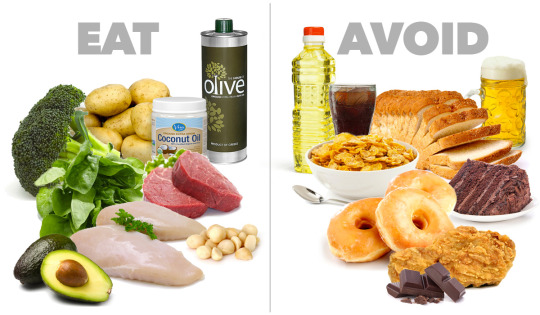
*Beverages
1. Water: As always, water should be your go-to beverage.
Coffee: Many studies show that coffee is high in antioxidants and quite healthy.
Green tea: A very healthy beverage.
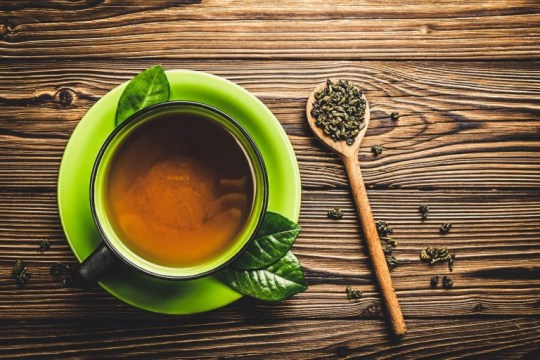
(Healthline, Kris Gunnars, 2018)
As the guideline, primarily grains (like wheat, rice) and high-sugar content vegetables/ fruits are prohibited in Atkins meals. This is definitely a huge challenge to me because rice is consumed every day in Asian cuisine, I must say it is vital ingredient account 60% in our meals portion as it provides half of energy source for one shot of dining. If we do not have rice, bread can be replaced sometimes but here bread is not allowed, too. To tackle this problem, I increase the amount of protein (fish, meat), fiber (vegetable, low-sugar content fruit) and drink more than 2L of water every day to fill up my stomach and reduce the feeling of hunger.
My typical daily menu in general:
- Breakfast: A glass of milk, nuts.
- Lunch: I eat much more than breakfast. One main course of meat and some vegetable added
- Dinner: Same dish as lunch but smaller portion, some fruits are added. I have less demand for dinner because at night from 7:00pm, the body will slow down its metabolic process and surplus energy will be accumulated as fat layers.
My menu during a week as following:
*Friday 21 Jun:
Main courses: Lyonnaise Salad + Pan Broiled Garlic - Sweet Fish Sauce Chicken Wing.
Dessert: Peach, almond, walnut
Supplement: 2% skimmed milk
In first day, I still use some slices of bread to substitute rice aim to let my body get along slowly well with this diet and milk is drunk to supplement nutrients and make me full.

*Saturday 22 Jun:
Main courses: Grilled Toro Beef + House Dressing Salad + Miso soup
Dessert: grapefruit, apricot, sunflower seeds
Supplement: 2% skimmed milk
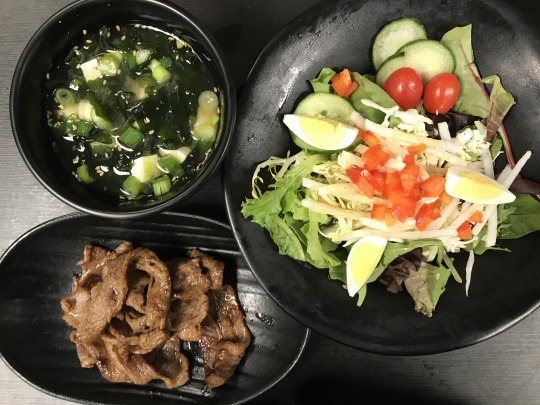
*Sunday 23 Jun:
Main courses: Sauce marinated pork jowl + Avocado Salad + Miso soup
Dessert: strawberry, apricot, pitascho
Supplement: 2% skimmed milk
At weekend Sat-Sun, I treated myself by Japanese BBQ styles dishes. Grilled Toro beef and pork jowl are often combined to rice but I remove it out of meal and add a bowl of salad. Along with them are miso soup including tofu (plant-based protein) and seaweed (minerals and vitamins, fiber – supporting loosing weight by postponing hunger)
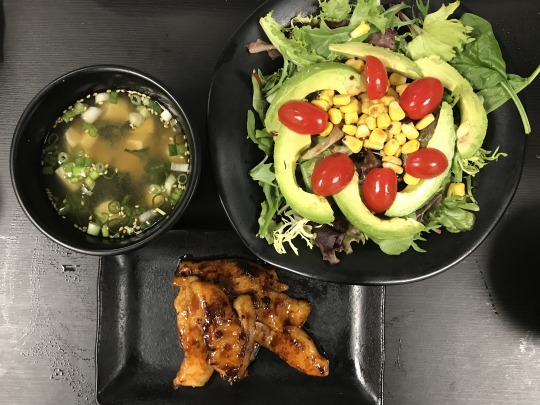
*Monday 24 Jun:
Main courses: Chick Breast Rice Soup
Dessert: strawberry, mandarin, sunflower seeds
Supplement: 2% skimmed milk
Dilute rice soup can calm down my body’s desire of rice. The chicken breast is less fat than other parts so used to add rice soup.
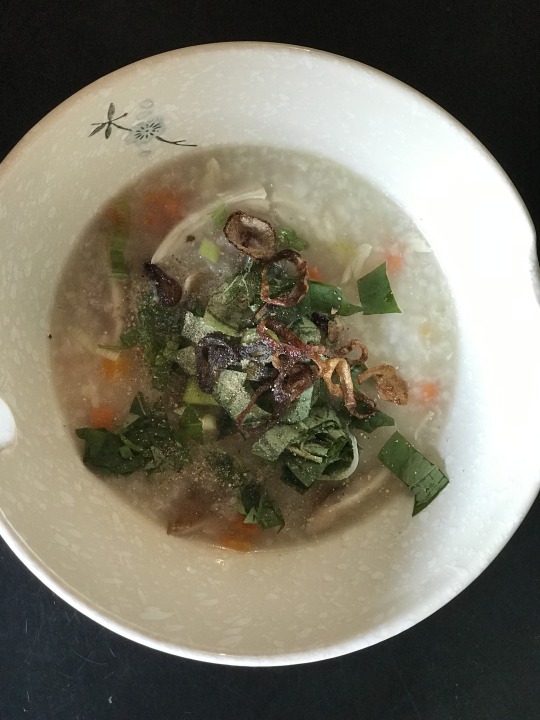
*Tuesday 25 Jun:
Main courses: Chicken Salad
Dessert: strawberry, almond, walnut
Supplement: 2% skimmed milk
I stayed home so energy is not required too much, I enjoyed my favorite chicken salad. You can see some brown saute’ shallot on top of salad, which aim to replace roasted peanut. Oil from shallot can balance the sour of salad as well as make body feel full longer.
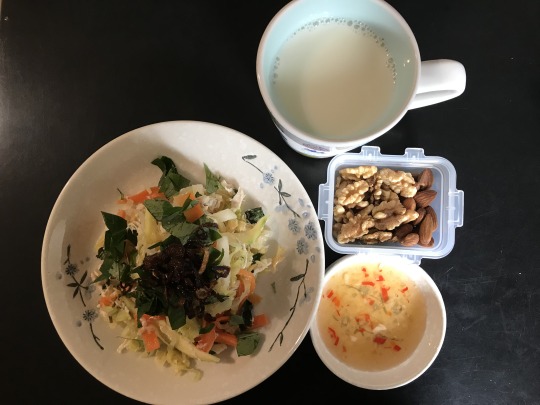
*Wednesday 26 Jun:
Main courses: BBQ Pork Rib
Dessert: strawberry, peach, mandarin
Supplement: 2% skimmed milk
At this time, my body survived better without rice, a piece BBQ sauce pork rib could satisfy my hunger. Then I refreshed with some cool fruits.

*Thursday 27 Jun:
Main courses: Poached eggs, Grilled garlic butter sauce salmon & blanched bok choy
Dessert: apricot, peach, mandarin, pistachio
Supplement: 2% skimmed milk
The last day of diet, my body has less demand of energy which most generated from carbohydrate and it does not desire for rice like first days. So brunch was simply poached egg & blanched bok choy. Then I grilled salmon with garlic butter sauce cover on top, really tasty and yummy! Salmon is rich of nutrients and omega 3 which are useful for female’s skin.
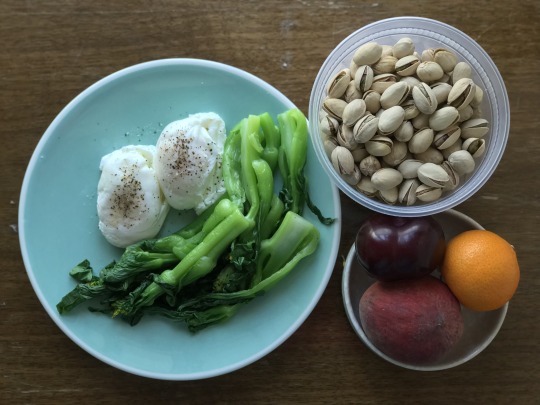
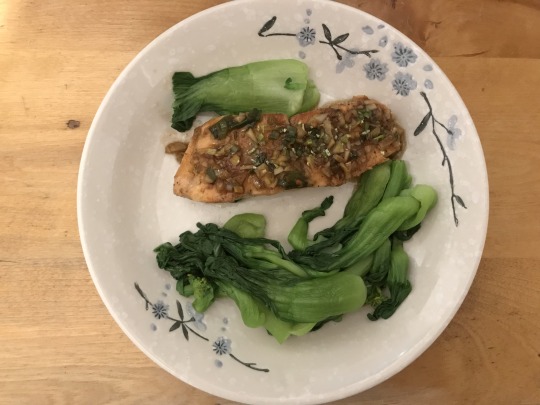
I admits that I was crazily hungry as the amount of bread and rice got in the stomach too little, it seemed to shout every second that “Rice, please!” and I was almost exhausted when I worked at my restaurant, I ought to drink water constantly to overflow my stomach. If I could drink coke, my hunger would be satisfied (when the restaurant so busy and I have no time for break) but in this diet, soft drinks are not permitted.
One week probably is not enough to conclude this diet is suitable to me or not but generally I think this diet solution is good and healthy. It is not too strict about volume of foods and nutrients input therefore dieters might reduce weight gradually with less health troublesome. Lastly, I just lose weight slightly of 600g and my belly seems to be unchanged (I wish I could know why). Anyway, not bad for one week!
Among my dishes in my weekly menu, I would like to recommend you try to make Chicken Salad. It is easy to prepare and can be stored in fridge 3 days. The recipe as below:
- Chicken breasts: 2 pcs
- Cabbage: ½ pc
- Pickled carrot and daikon: 1 cup
- Garlic: 3 cloves
- Lime juice: 1 tbs
- Vietnamese coriander: ½ bunch
- Carrot: 1 pc
- Thai chilies: 2 pcs
- Shallot: 1 pc (saute’ until brown)
- Green mango: ½ pc
- Sugar: 2 tbs
- Fish sauce: 2 tbs
- Warm water: ½ cup
Step 1: boiled or steamed chicken breasts until tender.
Step 2: Slice cabbage, carrot and mango in stripes (1cm of width), collect coriander leaves and wash all vegetable. Strain them and put 2 pinches of salt to dehydrate water/moisture from vegetables and make them be crunchy
Step 3: chop and mince chilies and garlic -> put in a small bowl to make sweet fish sauce. Add sugar and pound hardly to mix well with chilies and garlic -> lime juice -> warm water -> fish sauce -> stir well.
Step 4: tear chicken meat in lardon -> mix with strained vegetable + pickle + sweet fish sauce + chopped coriander + saute’ shallot -> mix well and enjoy!
In my hometown, my sister often put roasted peanut into the salad instead of shallot. Peanut’s nutty taste helps to balance the sour of salad and encourage aroma and palate. Regretfully, when I arrived Canada, I had slight allergic symptom when I ate peanut while this had not happened in Vietnam. Therefore, I got rid peanut of my dish and change to shallot without changing the characteristic of the salad.
The Atkins diet is popular thanks to its weight-lost effectiveness and health benefits such as prevent or limit dangerous health conditions like metabolic syndrome, diabetes, high blood pressure and cardiovascular disease, improve heart health. Nevertheless, every coin has two sides, some experts concerns Atkins has some negative impacts to eater’s body like headache, dizziness, weakness, fatigue, constipation. Low card input result in nutritional shortage or inadequate fiber – cause constipation, diarrhea and nausea.
Eating and tasting foods are the happiness of a cook or chef, therefore I would not follow any Diet solution. Just try to balance daily foods intake to body not exceed my body needs also do daily simple exercise like walking and stepping stairs (TTC subway is a good choice as we use it every day).
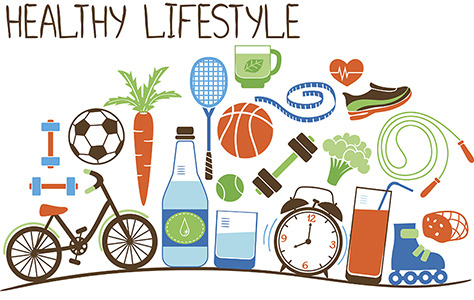
In point of view of a service provider – a potential cook, of course, I will study more about various Diet solutions and give advice to my customers. Also, adjust the formula to match well with their digestive demands is necessary.
References of data & sources:
Mayo Clinic. (nil). Atkins Diet: What’s behind the claims?. Retrieved June 27, 2019, from https://www.mayoclinic.org/healthy-lifestyle/weight-loss/in-depth/atkins-diet/art-20048485
Healthline. (2018). The Atkins Diet: Everything You Need to Know. Retrieved June 27, 2019, from https://www.healthline.com/nutrition/atkins-diet-101
Healthline. (2018). 7 Surprising Health Benefits of Eating Seaweed. Retrieved June 27, 2019, from https://www.healthline.com/nutrition/benefits-of-seaweed
Right Shape. (nil). Atkins Diet. Retrieved June 27, 2019, from https://www.rightshape.com/atkins-diet/
Smile Delivery Online. (nil). 4 Foods that you should not eat while losing weight. Retrieved June 27, 2019, from http://smiledeliveryonline.com/food/4-foods-that-you-should-not-eat-while-losing-weight/
Health Fitness Revolution. (nil). 10 Good Reasons to Drink Green Tea. Retrieved June 27, 2019, from https://www.healthfitnessrevolution.com/10-good-reasons-to-drink-green-tea/
Manor Surgery. (nil). Healthy Lifestyle. Retrieved June 27, 2019, from https://www.manorsurgery.co.uk/healthy-lifestyle
0 notes
Text
Vegan laksa
I am nearing the end of my stay in Krakow. I’ve completed a monumental amount of dental treatment whilst here (so it wasn’t all fun) and I am glad for it to be over and to be going back home. Having said that it was really nice to see my parents, to see the city covered in snow and to have a break from cooking (courtesy of my lovely mum and a few nearby eateries offering good vegan food).
I decided to get my teeth in tip-top shape, as lots of my old fillings needed replacing and I am planning to have adult braces put on soon. Duncan has blazed the trail for me (he is nearly done with his treatment) and he made me realise that once you get used to them, wearing them isn’t as big a deal as I had thought. Sure they are annoying to keep clean and you would not have them put on for the fun of it, but having crooked teeth is neither pretty nor easy to keep cavity-free, so I am going to bite the bullet. If you visit the blog at some point to find it awash with soups, smoothies and mashed potatoes, you’ll know why…And I apologise in advance… 😛
Even though, I’m still about a month away from having the braces put on, today’s recipe happens to be a soup. It’s not any old soup though, it’s an aromatic, spicy and creamy vegan laksa that’s really filling and comforting – perfect for these cold winter months. It’s warming and it won’t leave you hungry, thanks to a generous topping of flat rice noodles, steamed broccoli, pan-fried tofu cubes and sprouts.
In creating this recipe, I went against Duncan’s wisdom to keep things simple and I am hoping you’ll see that it’s worth it. We always have this tug of war going on in our kitchen when he is like ‘come up with something really simple’ and I always set out with this very intention, but then get side-tracked and before I know it the recipe can no longer be called simple. See, to my mind a tasty vegan recipe (or any recipe for that matter) relies on a careful layering of flavours and textures that play off each other. Sometimes simple pleasures like new potatoes with some vegan butter and a pinch of salt will do, but most of the time a bit more effort is required to create a dish you’ll want to have again and again.
With laksa, the devil is in the spicy and aromatic paste that needs to be slowly fried off for as long as possible for all its amazing flavours to develop. Then it’s about the creaminess of coconut versus the acidity of lime and the freshness of sprouts and herbs, versus the toothiness of noodles. Typically, laksa paste contains shrimp paste for umami (or 5th taste as it’s also known). To mimic that seafoody taste, I’ve ground up some nori sheets, which adds a subtle taste of the ocean to my paste and I am really pleased with the outcome. I really hope you’ll make it and love it as much as we did!
PS: If you make my vegan laksa, don’t forget to tag me on Instagram as @lazycatkitchen and use the #lazycatkitchen hashtag. I love seeing your takes on my recipes!
serves: 4
prep: 20 min
cooking: 60 min
Ingredients
LAKSA PASTE*
3 medium shallots, sliced roughly
4 garlic cloves
2 lemongrass stalks, white part chopped (but keep the rest)
about 40 g / 1.5 oz ginger or galangal, sliced roughly
4 fresh red chillis or dried Thai chillis soaked in boiling water (adjust to your level of heat tolerance)
1 tbsp ground (approx. 1 sheet) nori (toasted seaweed used for sushi), torn into bits**
2 tbsp neutral tasting oil (I used rice bran oil)
1 tsp ground turmeric
1 tsp ground coriander or 2 tsp coriander seeds (toasted and ground)
½ tsp ground cumin or 1 tsp cumin seeds (toasted and ground)
1 tsp sweet ground paprika (optional, for colour)
BROTH
1.2 L / 5 cups veggie stock or veggie stock powder / cube dissolved in water
1¼ tsp fine salt, adjust to taste
400 ml / 14 oz full fat coconut milk
juice of ½ lime (approx. 2-3 tbsp), adjust to taste
1½ tsp sugar (I used coconut sugar), adjust to taste
TOPPINGS
steamed green veggies: broccoli, bok choi, spinach
200 g flat rice noodles, cooked
250 g of shop-bought tofu puffs or fried / baked tofu
200 g fresh bean sprouts, cleaned and blanched
fresh coriander, chopped
Method
Place all the paste ingredients apart from the dry spices in a food processor or chopper and process until finely shredded. You could also use a blender, but you will need to add water and the paste will splatter a lot when being fried off in the next step.
Heat up 2 tbsp of oil in a heavy bottomed pot. Add the laksa paste and fry it off very slowly (on a low heat) for at least 15 minutes, stirring the whole time.
With 5 minutes left to go, add dry spices and continue to fry the mixture off gently, stirring regularly.
Next, add in stock, 1 tsp of salt and all the lemongrass leftovers that did not go into the paste, apart from the very outer leaves. Cover the pot and bring the soup to a gentle simmer. Simmer for about 30 minutes.
Fish out the lemongrass bits with a slotted spoon and discard. Slowly stir in coconut milk.
Taste the soup and season to taste with more salt (if needed), lime juice and a touch of sugar.
Divide the greens, noodles and tofu puffs between 4 bowls. Top with blanched sprouts and fresh coriander.
Notes
*As a cheat, you could use 3-4 tbsp of shop-bought vegan Thai red curry paste instead. It won’t be quite authentic, but also delicious and way faster.
**I pregrind it in my spice grinder and keep it in a sealed jar as it’s a perfect, rich in iodine, seasoning to sprinkle on rice / sushi and it makes an excellent replacement for the fishy umami flavour that so many South-East Asian dishes feature.
If you want more info on some of the ingredients that we use in our recipes, check out our glossary.
Join our mailing list
and get a sweet e-book

Source: https://www.lazycatkitchen.com/vegan-laksa/
0 notes
Text
Sheet Pan Sweet and Spicy Pork
This Whole30-friendly sheet pan dinner was inspired by the flavors of Chinese barbecue pork (a.k.a. char siu)—long strips of seasoned, roasted boneless pork, often glazed with a sweet barbecue sauce.
Yes, I have a Paleo Char Siu recipe, too, but unfortunately, the traditional preparation takes hours, and I simply don’t have time for that on a weeknight. On busy evenings, I just want to throw some healthy protein and veggies tossed with a umami-packed marinade in the oven and call it dinner. (Of course, when you’re not pressed for time, you should definitely make my Paleo Char Siu because it’s amazing and well worth the effort. Do it this weekend!)
COOKING TIPS, SUBSTITUTIONS, AND SUGGESTIONS
Can I use a different protein in place of the pork?
Absolutely! Boneless and skinless chicken pieces work great in this recipe, but you may have to cook them longer (25 to 35 minutes) to reach the proper temperature (a meat thermometer should read 165°F in the thickest part of the thigh or 150°F if you’re using chicken breasts). Alternatively, you can cut the chicken pieces into smaller pieces to speed up the cooking time.
Are there other vegetables I can use?
Yes! Choose vegetables that are skinny and cook in the same amount of time as the green beans. Some great substitutes are broccolini (a.k.a. baby broccoli) and asparagus.
Where can I find Whole30-compliant sriracha?
Whole30-friendly sriracha is not easy to find, but I have great recipe for it over here. If you like spicy food but don’t want to make your own sriracha, simply add ½ teaspoon crushed red pepper flakes in place of it. Taste the marinade and add more if desired.
Can I leave out the sriracha?
Truth be told, the sriracha only adds a subtle kick of heat—even my kids don’t find it overwhelming. Of course, everyone has different spice tolerance, so feel free to tweak the marinade to your taste. You can adjust the amount of spiciness yourself—add a little sriracha at a time and taste the marinade until it is suits your tastebuds.
You can leave out the sriracha altogether if you don’t like spicy dishes—just sample the marinade before tossing in the raw pork to check if you need to add extra coconut aminos or fish sauce to balance out the sweetness of the jam.
Where do I find Whole30-compliant jam?
It’s important to use a high-quality, 100% fruit jam in this recipe. I buy St. Dalfour brand (it’s not a sponsor—I just like the stuff, and it’s pretty widely available), and its plum, apricot, and peach spreads work equally well in this recipe. I’ve found this brand at most grocery stores, but you can also find it online.
Is parchment paper necessary?
Although the pictures in this recipe post show parchment-lined baking sheets, they only help make clean-up easier. In fact, you actually get better browning when you leave it off. The choice is up to you!
What side dishes can I serve with this dish?
I like to serve a simple vegetable side dish with this dish: Simple Cauliflower Rice, stir-fried greens (e.g. spinach, bok choy, or broccoli), or a big green salad.
How do I store the leftovers?
You can store the leftovers in a sealed container in the fridge for up to four days or in the freezer for a few months.
Now let’s make a simple sheet pan dinner!
Serves 6
Ingredients:
2 pounds pork tenderloin, cut crosswise into 1-inch medallions
Diamond Crystal kosher salt
½ cup plum jam (with just fruit juice as sweetener)
2 tablespoons coconut aminos
2 tablespoons Whole30 Sriracha
2 tablespoons tomato paste
1 teaspoon Red Boat fish sauce
2 garlic cloves, minced
Freshly ground black pepper
1 pound green beans, trimmed
¼ pound shiitake mushrooms, stemmed and quartered
1 medium red bell pepper, cut into 1-inch squares
½ medium red onion, cut into ½-inch wedges
2 scallions, sliced on the bias
Equipment:
Cutting board
Chef’s knife
Measuring cups
Measuring spoons
Large bowl
(2) Rimmed baking sheets
Method:
Preheat the oven to 450°F or 425°F convection, with one rack in the upper middle position and another one in the lower middle position. While you’re waiting for the oven to heat up, prep the ingredients.
Sprinkle 1½ teaspoons Diamond Crystal kosher salt on the pork medallions and toss well.
Next, combine the jam, coconut aminos, sriracha, tomato paste, fish sauce, garlic, and ¼ teaspoon freshly ground black pepper in a large bowl.
Whisk until smooth.
Add the pork to the bowl and mix well. Arrange the pork in a single-layer on two rimmed baking sheet.
Toss in the green beans, mushrooms, bell pepper, and onions, and 1 teaspoon kosher salt to the bowl with the remaining sauce. Use your hands to coat all the vegetables evenly in the sauce.
Arrange the veggies in a single layer around the pork on the baking sheets.
Pop the trays in the oven…
…and roast for a total of 15 to 20 minutes or until the pork is cooked through (140°F in the thickest parts of the pork medallions), swapping the pans at the halfway point to ensure even doneness.
If you want your pork and veggies with a little more char, place each tray about 6 inches under the broiler for a few minutes to brown. Top with scallions and serve.
Looking for more recipe ideas? Head on over to my Recipe Index. You’ll also find exclusive recipes on my iPhone and iPad app, and in my cookbooks, Nom Nom Paleo: Food for Humans (Andrews McMeel Publishing 2013) and Ready or Not! (Andrews McMeel Publishing 2017)!



PRINTER-FRIENDLY RECIPE CARD
Sheet Pan Sweet and Spicy Pork

This Whole30-friendly Sheet Pan Sweet and Spicy Pork perfect for busy weeknights when you want a healthy and delicious dinner in no time flat! The tangy marinade has a slight kick and tastes great on many protein and vegetable combinations!
2 pounds pork tenderloin (cut crosswise into 1-inch medallions)
Diamond Crystal kosher salt
½ cup plum jam (sweetened with fruit juice (peach and apricot jam also work))
2 tablespoons coconut aminos
2 tablespoons Whole30 Sriracha
2 tablespoons tomato paste
1 teaspoon Red Boat fish sauce
2 garlic cloves (minced)
freshly ground black pepper
1 pound green beans (trimmed)
¼ pound fresh shiitake mushrooms (stemmed and quartered)
1 medium red bell pepper (cut into 1-inch squares)
½ medium red onion (cut into ½-inch wedges)
2 scallions (sliced on the bias)
Preheat the oven to 450°F or 425°F convection, with one rack in the upper middle position and another one in the lower middle position. While you’re waiting for the oven to heat up, prep the ingredients.
Sprinkle 1½ teaspoons Diamond Crystal kosher salt on the pork medallions and toss well.
Next, combine the jam, coconut aminos, sriracha, tomato paste, fish sauce, garlic, and ¼ teaspoon freshly ground black pepper in a large bowl. Whisk until smooth.
Add the pork to the bowl and mix well. Arrange the pork in a single-layer on two rimmed baking sheet.
Toss in the green beans, mushrooms, bell pepper, and onions, and 1 teaspoon kosher salt to the bowl with the remaining sauce. Use your hands to coat all the vegetables evenly in the sauce.
Arrange the veggies in a single layer around the pork on the baking sheets.
Pop the trays in the oven and roast for a total of 15 to 20 minutes or until the pork is cooked through (140°F in the thickest parts of the pork medallions), swapping the pans at the halfway point to ensure even doneness.
If you want your pork and veggies with a little more char, place each tray about 6 inches under the broiler for a few minutes to brown. Top with scallions and serve.
The post Sheet Pan Sweet and Spicy Pork appeared first on Nom Nom Paleo®.
0 notes
Text
Organic Online Vegetables Seeds - Summer

Summer Seeds

All Seeds

Spring

Fall

Winter
FAQ
Which vegetables are suitable for summer planting? Some of the vegetables that are suitable for summer planting include tomatoes, cucumbers, peppers, zucchini, beans, eggplants, and okra. These vegetables thrive in warm weather and can tolerate high temperatures. Can I use regular seeds for organic gardening? Yes, you can use regular seeds for organic gardening. However, it’s important to ensure that the seeds are not treated with synthetic chemicals and have not been genetically modified. To be sure, look for seeds that are certified organic by a reputable organization. How do I prepare my soil for planting organic vegetable seeds in summer? To prepare your soil for planting organic vegetable seeds in summer, start by removing any weeds or debris from the planting area. Then, loosen the soil with a rake or hoe and add compost or other organic matter to improve soil fertility and structure. Make sure the soil is well-draining and has adequate moisture before planting. How often should I water my organic vegetable seeds during summer? During summer, organic vegetable seeds may require more frequent watering due to high temperatures and dry conditions. Water the seeds deeply and regularly, preferably in the morning or evening to avoid evaporation. Check the soil moisture regularly and adjust your watering schedule as needed. How long does it take for organic vegetable seeds to germinate in summer? The germination time for organic vegetable seeds in summer can vary depending on the type of vegetable and growing conditions. Generally, most vegetable seeds will germinate within 7-14 days if the soil temperature is between 60-85°F and the soil is kept consistently moist. However, some seeds may take longer to germinate or may require special growing conditions. What are organic vegetable seeds? Organic vegetable seeds refer to seeds that are produced without the use of synthetic fertilizers, pesticides, or genetically modified organisms (GMOs). These seeds are grown and harvested using natural methods that promote soil health and protect the environment. Where can I buy organic vegetable seeds for summer? You can buy organic vegetable seeds for summer from online retailers, seed catalogs, or your local garden center. Look for companies that specialize in organic and non-GMO seeds and offer a wide variety of vegetable seeds suitable for summer planting.
Click To Grow

Tomato

Cucumber

Pepper

Bean
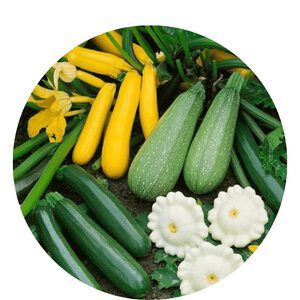
Zucchini

Melon

watermelon

Corn
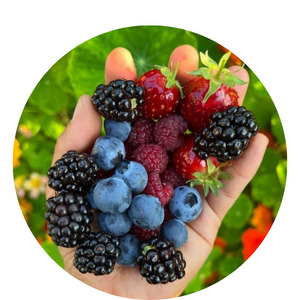
strawberry
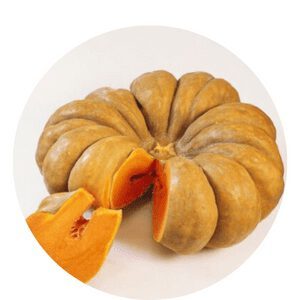
Pumpkin
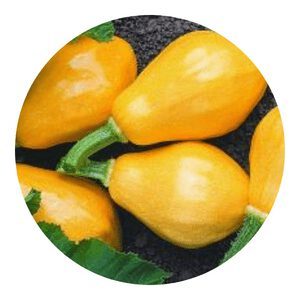
Squash
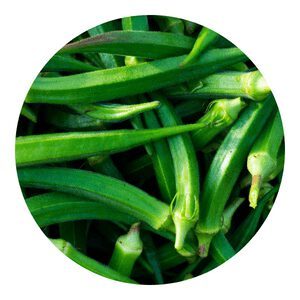
Okra
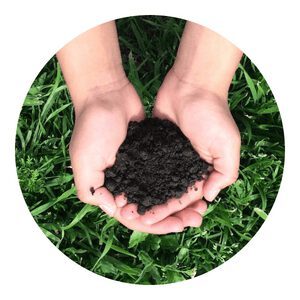
Fertilzer
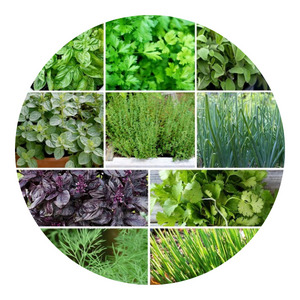
Herbs
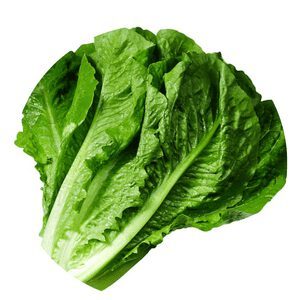
Lettuce

Eggplant
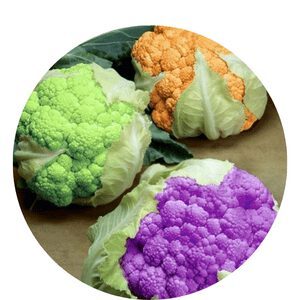
Cauliflower
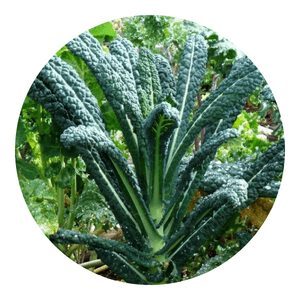
Kale

Carrot

Artichoke
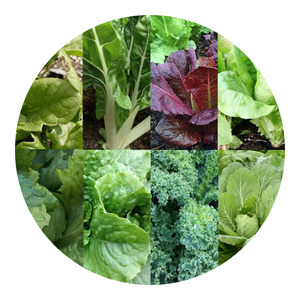
Greens
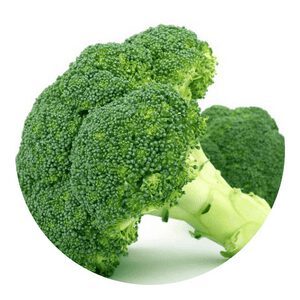
Broccoli
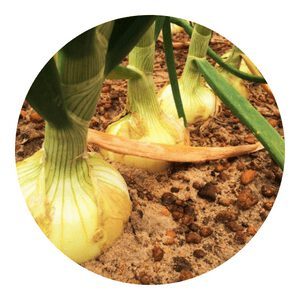
Onion

Cabbage
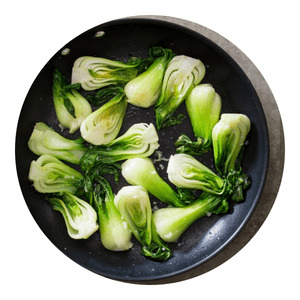
Bok Choy
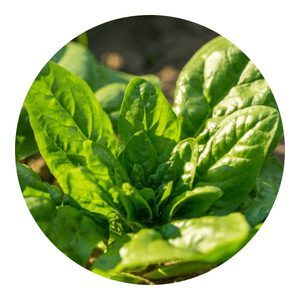
Spinach Helps Us Grow - Share If You Like Facebook Twitter LinkedIn Pinterest Reddit WhatsApp Read the full article
1 note
·
View note
Text
Early Spring Vegetables List: Don’t Wait on Winter Waning
By Anita Stone, North Carolina – The snow is melting and daytime temperatures are calling you outside. Leaf buds swell on trees and your hands long to feel the soil once again. And you’re hungry. You want leafy greens, tender shoots, something … anything from your garden. Here’s an early spring vegetables list you can plant right now.
Birth of a Season
For months we’ve subsisted on autumn’s harvest. Winter squash ripened bright orange and sat patiently in storage until we cooked it. Sweet, crisp apples gave us vitamin C to battle the flu season. Dry beans simmered for hours in slow cookers for hearty, comforting meals.
Ready to Start Your Own Backyard Flock?
Get tips and tricks for starting your new flock from our chicken experts. Download your FREE guide today! YES! I want this Free Guide »
Mother Nature knows what she’s doing. We enjoy bountiful, nutritious vegetables in the summer. Carbohydrate-rich fall crops provide calories necessary for hard work and building a lipid layer which, until recently, has been crucial for human survival during the winter. Even the life cycles of lambs and chickens coincide with humans’ need for protein and fat during different times of the year. And as winter shrouds the land and crops refuse to grow, we consume food storage: grains and beans, long-storage squash, root vegetables, and what we have dehydrated and preserved from our gardens.
Then spring blossoms. The first plants on a spring vegetables list to appear are the healthiest. Dandelions and parsley, sprouting and growing despite frost and intermittent snowstorms, offer nutrients we’ve lacked all season. It’s a powerful reprieve to a long, lean winter.
Miraculously, the crops you can plant first on your spring vegetables list are also loaded with the nutrients you need most right now.
Ready to Start Your Own Backyard Flock?
Get tips and tricks for starting your new flock from our chicken experts. Download your FREE guide today! YES! I want this Free Guide »
Workable Ground
You can plant and harvest several months before your area’s final frost date. And though websites may tell you to plant onions in January and broccoli in February, this is location-specific. Your own garden may differ.
If you don’t already know your planting zone, research it. This will help determine when you should start herbs and when it’s safe to finally put tomatoes outside. Along the Pacific coastline, temperatures probably didn’t drop below 20 Fahrenheit so you may be able to start radishes after the New Year. Minnesota soil may still be frozen in March.
Seed packages recommend planting as soon as the ground can be worked. That means the dirt isn’t frozen, even if the ambient temperatures still drop below freezing. Soil doesn’t bind in wet clumps, refusing to fall from your shovel. It crumbles with a gentle touch. Water doesn’t stand on top of the ground so saturated it won’t sink further.
Plant spring crops as soon as you can. Time is critical because many cold-weather crops turn bitter or go to seed when it gets too hot. Find the sunniest, warmest location of your garden. If you use containers, placing them on a driveway or against a brick wall can draw in additional heat. Plant seeds as directed on the package, paying heed to depth and spacing requirements. If you sow and then a cold snap moves in, encourage germination by placing thick clear plastic or an old glass window over the ground, allowing enough room below for air to circulate.
If seed packages instruct you to wait until all danger of frost has passed, hold tight to those for several more months.
Early Spring Vegetables List
Salad Greens: Among the earliest crops are lettuce, arugula, and mesclun mixes. You’ll have success growing lettuce and greens when the soil is 55 degrees and many can be harvested within 30 days. And though they won’t flourish during long cold snaps, they won’t die unless temperatures dip below 28 degrees.
Spinach: Plant in the spring ground, harvest within 60 days, and get the most of this crop before it bolts. Most spinach cannot tolerate a hot summer. Some varieties are bred to thrive longer, but spinach is best enjoyed when it’s still springtime.
Asian Greens: Extremely hardy varieties such as bok choy and napa cabbage still look stunning when glazed with a thin layer of ice. And once the ice melts, they shine in the sun and continue to grow. Protect these from a hard frost but don’t worry if the nights still fall between 28 and 32.
Radishes: And if temperatures do still fall below 28? Your radishes will be fine. Growing radishes of a smaller variety such as Easter Egg mature within 30 days while larger, sweeter radishes like daikon can take 60 to 90. Root crops like radishes prefer to be direct-sown, planted right in the ground rather than started as seedlings.
Kale: This tough and nutritious leafy green sits beside radishes as one of the toughest brassicas you can grow. It can even thrive during mild winters with no snow pack. Sow early and protect seedlings from a hard frost to give them a little boost. Harvest the lowermost leaves and let the plant continue to grow through the summer heat.
Onions: Choose long day onions if you live in the north; short day varieties if you live in Zone 7 or warmer. To harvest sooner, purchase onion “sets,” tiny bulbs that have been started, pulled, and dried so you can replant and continue growing. Onion seeds are useful for growing rare varieties, though this adds several months to the maturity date. Start seeds inside to encourage germination and then plant the tiny spikes in the ground after hardening them off for a few days. Onions can survive a hard frost and poke right through the late snow.
Peas: Snow peas are aptly named. They’re among the first crops you can plant, and seedlings actually fare better in a hard frost than maturing plants. Both snow and snap peas can grace your table within 60 days. Direct-sow peas for the best results.
Beets and Swiss Chard: Silverbeet is the name for chard in Australia and New Zealand because they are in the same family. And they’re extremely nutritious plants which offer edible greens and roots that live in cold conditions. Direct-sow inside or out then carefully thin and replant after seedlings emerge.
Carrots: Though they can be planted as soon as the ground can be worked, carrots do prefer temperatures a little warmer. Often gardeners plant carrots during the second month of spring, after temperatures are higher but still freezing at night. Scatter in rows then thin after seedlings emerge. Remember that carrots only grow as large as the space you give them.
Starting plants indoors during the late winter will help you get a head start on your garden this year.
In the Greenhouse
May frost-intolerant crops thrive best if they are started in a greenhouse several months before the final frost date. Seed catalogs list “days to maturity” as 60 to 95 days, but this count starts after you transplant at about eight weeks old.
A sunny window usually isn’t enough for garden vegetables, as they need at least eight hours of direct sunlight. Growing within a house window can result in pale, leggy, unhealthy seedlings. If you have no greenhouse or sunroom, supplement with a strong ultraviolet light when sun doesn’t shine directly on the plants. Set the light very close to the plants, but don’t allow seedlings to touch hot bulbs.
Always harden seedlings off before planting outside.
Tomatoes: Start your favorite varieties within eight weeks of your final frost date. Healthy tomatoes grow fast, so be prepared to transplant a few times before they go outside. The best tomatoes have plenty of root space.
Peppers: The hottest peppers originate in the warmest climates. Give them more time to grow. Start bhut jolokia or habaneros 10 to 12 weeks before your last frost date; jalapeños or banana peppers should be started eight weeks before. Transplant often enough that plants do not get root bound.
Eggplant: Starting slow and tender and then growing fast, eggplant despise the cold. Even 40 degrees can make them wilt. Sow a few weeks before your tomatoes then keep eggplant in the warmest area of your greenhouse for best results.
Herbs: Most commonly used herbs are surprisingly frost- tolerant. Perennials such as oregano and thyme re-emerge soon after the ground warms. Hardier rosemary can live through the winter. Basil, however, blackens and dies before temperatures even drop to freezing. Start herbs indoors to encourage germination. Harden off all plants, especially those purchased from a greenhouse, placing permanently outdoors.
Sweet Potatoes: Seed companies sell sweet potatoes as slips: little green shoots just starting to form roots. They also ship sweet potato slips in April, which may or may not be warm enough for them to go outside. Sweet potatoes must have heat to survive. But you can start your own slips by purchasing organic sweet potatoes from a supermarket, setting them on moist soil or half-submerged in water, and keeping them in a greenhouse. It may take a couple months for decent slips to emerge from a supermarket tuber. Once sprouts form, carefully remove them and insert halfway into moist, fertile soil so they can take root.
Though squash, beans, and corn are sold within greenhouses as starts and seedlings, they fare best directly-sown within your garden. Root damage and transplant shock can stunt the plant. Seeds sown directly sprout and flourish within the location they were intended.
Whether you have a relish for salads topped with crisp sugar snap peas or want to add fresh greens to warm comforting soups, your garden can provide early in the year with proper selection of seeds and choice location.
Hardening Off
Greenhouse-grown plants have been pampered their whole lives. Kept warm, in high humidity and moist soil, they have never even experienced direct sunlight. Always ask your local nursery if plants have been hardened off; chances are, they haven’t. Staff in corporate-owned garden centers may not even know what “hardened off” means.
To harden off plants grown within your greenhouse or others, bring them outside for a single hour in unfiltered sunlight or for two hours during a cloudy day. Don’t forget them or they will sunburn! The next day, double the time spent outside. Double that again the following day. By the time your plants can spend eight hours in full sun without damage, and a chilly night without wilting, they are ready to live permanently in the garden.
Transplant in the evening to avoid shock. Heat and strong sunlight stress a plant and right now they need to recover as roots take hold. Dig a hole in your garden soil and fill with water. Transplant, fill in soil around the plant, mulch, and water again. Let the plant spend a gentle, cool night before the sun comes out strong again.
What About Potatoes?
You’ll hear conflicting advice regarding potatoes. Though some gardeners sow them in the early spring, potatoes are nightshades. The green tops cannot withstand a frost. If they emerge then must endure a cold snap, the tops will die back, which will stunt development of tubers. Potatoes mature within 90 to 120 days, which allows plenty of time during most growing seasons. If your season is shorter than most, plant potatoes early but mulch around tender new leaves and provide frost protection if temperatures drop.
Season Extenders
Cold frames, hoop houses, water walls, and frost blankets are all ways to extend the season and plant your crops sooner. Even cold-weather vegetables benefit from a little-added warmth.
Cold frames combine rigid sides with a glass or plastic top, set directly atop soil to add heat and light beyond the season. They can be permanent structures built of wood and old windows or makeshift enclosures of straw bales with thick plastic tacked atop. Hoop houses can be as simple as PVC pipe or livestock panels, arched over a raised bed and covered with plastic. If you don’t have the space or finances for either, purchase a frost blanket from a local garden center or online retailer. Suspend it above the plants for the best protection, as the frost may penetrate material that lies directly on leaves. Frost blanket still allows in at least 80% of the sunlight so you don’t need to remove it on cold days. But it does filter the light, so plants grown entirely under frost protection will need to be introduced gradually to full sunlight before the protection is dismantled.
Originally published in Countryside March/April 2017.
Early Spring Vegetables List: Don’t Wait on Winter Waning was originally posted by All About Chickens
0 notes
Text
Sweet Foods Making You Sick? You Might Have Fructose Intolerance!
New Post has been published on http://healingawerness.com/getting-healthy/getting-healthy-women/sweet-foods-making-you-sick-you-might-have-fructose-intolerance/
Sweet Foods Making You Sick? You Might Have Fructose Intolerance!
Swathi Handoo February 7, 2019
Food intolerances and allergies have become the ‘in-thing.’ After nut allergy, gluten intolerance, and lactose intolerance, another intolerance that is trending is fructose intolerance. Fructose intolerance and malabsorption makes you allergic to anything that has fructose and sucrose.
People having this intolerance cannot digest sweets, fruits, beverages, ice creams, and fad foods. Sounds unrealistic, doesn’t it? It’s a lot more dangerous than you’d imagine!
Read on to find out what fructose intolerance is and how it is caused. If you are, unfortunately, intolerant to fructose, check out what foods to eat and what not to eat in this article. Scroll down!
Table Of Contents
Fructose Intolerance: In Detail
Fructose is a sugar present naturally in fruits, vegetables, and honey. It is enzymatically synthesized on a large scale from corn as high-fructose corn syrup (HFCS).
HFCS is a widely used sweetener present in processed foods, beverages, soft drinks, juices, flavored milk, yogurt, etc. (1).
Fructose intolerance occurs when your body is unable to absorb fructose efficiently, leading to fructose malabsorption. The unabsorbed fructose causes an influx of water into the digestive lumen. This water pushes the bowel contents into the colon, where it gets fermented and produces gas.
This also leads to symptoms like abdominal pain, bloating, and excessive gas (1).
What causes this condition? Find out in the next section.
Back To TOC
What Causes Fructose Intolerance?
By design, humans cannot absorb a lot of fructose. Fructose is absorbed by transporters and carrier-mediated facilitated diffusion, which is not a very efficient process. Even if fructose is well-absorbed, we probably don’t have the kind of machinery needed to generate the required energy molecules (ATP) from it.
Moreover, due to various genetic, epigenetic, physiological, evolutionary, and lifestyle changes, humans are growing to be fructose intolerant (1).
Heredity also plays a vital role in making one intolerant to fructose. Hereditary fructose intolerance (HFI) is a metabolic disease. It is caused due to the absence of a fructose-digesting enzyme called aldolase B (2). This absence is actually a result of a mutation in the ALDOB gene that makes this protein (enzyme).
Aldolase B is critical for the conversion of fructose to glucose, which further gives ATP. Individuals who lack aldolase B face serious side effects on ingesting fructose or sucrose. The patients might have severe hypoglycemia (drop in blood sugar levels) along with the accumulation of toxic intermediates in the liver (2).
Hereditary fructose intolerance is passed from one generation to the next. Not all individuals in a generation might show severe symptoms, though. Whether it is genetic or sporadic, fructose intolerance might be confused with galactosemia or liver diseases (2).
Also, similar symptoms appear when you eat a lot of other processed or stale foods. We tend to ignore them. Then, how would you know it is fructose intolerance?
Well, you should certainly see a doctor if the above symptoms have become a routine and chronic. You could also observe what triggers the intolerance symptoms – a particular type of food or a specific combination of ingredients that are high in fructose.
Can Fructose Intolerance Be Life-threatening?
Hereditary fructose intolerance can be life-threatening if not diagnosed early. It is difficult to diagnose this tolerance in infants, but symptoms become vivid during weaning. Adults might develop a ‘protective’ aversion towards sweet-tasting foods.
However, acute exposure to sugar and artificial sources of sugar can trigger liver damage and also death in such patients (3).
Remember, fructose intolerance should not be confused with fructose malabsorption. Intolerance arises when your body lacks the machinery (enzymes) to break down fructose. Malabsorption can be sporadic, with no genetic anomaly. It can be a result of the inability of protein carriers to transport fructose from the small intestines.
Malabsorption can have milder symptoms that quickly subside if attended to. Hence, it might not be lethal.
For you to do this assignment, we’ve made a comprehensive list of foods that are high in fructose. If eating them gave you a bad bloat and abdominal pain, you might be fructose intolerant. Although it is not as simple as it sounds, you can still try the exercise. Scroll down and start!
Back To TOC
What Foods Are High In Fructose?
Shutterstock
Since they are high in fructose, you should avoid the following foods if you are diagnosed with fructose intolerance:
Vegetables And Vegetable Products Fruits, Dry Fruits, And Fruit Juices Grains And Cereals Tomato paste Dried currants Wheat bread Canned tomatoes Wild blueberries Pasta Tomato ketchup Yellow plantain Couscous Shallots Orange juice (concentrate) Grains with added HFCS Onions Tamarind nectar Grains with added dried fruit Artichoke Pears Asparagus Mangoes Dairy And Poultry Products Broccoli Cherries Chocolate milk (commercial) Sweet corn Apples (without skin) Fresh egg white Leeks Papayas Mushrooms Lemon juice (raw) Ladies finger (okra) Peas Red pepper Asparagus
Source: USDA Food Composition Database
Wondering what is left to eat?
Don’t worry, there’s lots! In the next section, you will find an extensive list of foods that are low in fructose. Read on and note them down (1).
Back To TOC
Best Low-Fructose Foods For The Fructose Intolerant
Shutterstock
Fruits
Avocado
Cranberries
Lime
Pineapple
Cantaloupe
Strawberries
Bananas
Mandarin orange
Vegetables
Bok choy
Bamboo shoots
Celery
Chives
Beets
Kale
Radish
Rhubarb
Spinach
Winter squash
Green pepper
Turnip greens
Cereals And Grains
Gluten-free breads
Quinoa
Rye
Rice
Buckwheat flour
Oatmeal
Pastas without HFCS
Soba noodles
Corn chips and tortillas
Cornmeal
Dairy Products
Milk
Cheese
Almond milk
Yogurt (without HFCS)
Soy milk
Rice milk
Some adults have fructose intolerance, coupled with lactose intolerance and irritable bowel syndrome (IBS). Such people should choose lactose-free and fructose/sucrose-free foods on the list. For example, almond milk (home-made), kale, spinach, squash, avocado, mandarin oranges, etc.
These would still make a wholesome and tasty meal, what say? Vaguely, such intolerances get you inclined towards clean eating. (Yes, always look at the bright side!)
But when do you start eating clean? How will you know if you are fructose intolerant or have fructose malabsorption?
Valid questions. These intolerances, as I mentioned before, are difficult to diagnose. But the medical community has come up with a few ways. Want to know what they are? Scroll to the next section.
Back To TOC
Are There Any Tests To Diagnose Fructose Intolerance?
Yes! Those with fructose intolerance typically show symptoms like diarrhea, constipation, irritable bowel syndrome, functional dyspepsia, bloating, gas, allergy, and rashes (4).
It is evident that these symptoms can be a result of other systemic infections too. Very few tests are available to confirm that these are in response to fructose intolerance and malabsorption. Out of them, the most common and standard one is the breath test.
Back To TOC
How Does The Breath Test Work?
This test works on the principle of glucose metabolism by intestinal bacteria.
In normal cases, when you drink or eat something sweet, sugar (in the form of fructose or sucrose) gets broken down into glucose in your small intestine. Glucose is then converted into ATP (energy) and used up by the body.
If you are fructose intolerant, undigested fructose passes through the duodenum and reaches the large intestine. The intestinal bacteria ferment the undigested fructose and release glucose along with gases like hydrogen or methane.
During a breath test, you will have to drink a solution of fructose or sucrose in water. You will then have to breathe into a plastic bag. The breath sample would be taken every 30 minutes for children and 15 minutes for adults. The sampling will continue for about 2-3 hours.
These samples are then analyzed for hydrogen content to determine your ability to metabolize fructose (5).
You will be kept on a strict low-fructose diet or a customized one set by your physician before you undergo this test. You might also have to talk to your doctor if you have diabetes, constipation, or any other complication.
Back To TOC
In A Nutshell…
Fructose intolerance is a poorly diagnosed and managed food allergy. It can be life-threatening if left untreated. Check out the high-fructose foods and replace them with the low-fructose options from the lists above. Above all, meet a doctor if you notice the symptoms we’ve discussed here.
If you got what you were searching for about fructose intolerance, please share your valuable feedback and suggestions in the box below. Post your queries here to get them answered by our experts.
And, don’t ignore food intolerances – they can cost you your life!
References
“Dietary fructose intolerance, fructan intolerance and…” Current Gastroenterology Reports, US National Library of Medicine.
“Hereditary fructose intolerance” Genetic and Rare Diseases Information Center, National Center for Advancing Translational Sciences, National Institutes of Health.
“Specifics of HFI and Its Diagnosis” HFI Laboratory at Boston University.
“Fructose and lactose intolerance and malabsorption…” Alimentary Pharmacology and Therapeutics, US National Library of Medicine.
“Hydrogen Breath Test” Health System, University of Michigan.
The following two tabs change content below.
Latest posts by Swathi Handoo (see all)
Swathi Handoo
RELATED ARTICLES
Source: https://www.stylecraze.com/articles/fructose-intolerance/
0 notes
Text
The Ultimate Guide to the GAPS Diet
The GAPS Diet
When you hear the word “diet” what comes to mind?
If you’re like most people, you instantly think “weight loss.”
However, the word “diet” actually means “a way of life”—and diets simply entail the foods we eat on the daily for our best health.
For some, the “diet” they follow actually means eating foods that help heal their body, if they are coming from a place of illness, disease or digestive distress.
“Therapeutic diets” can help one do just that.
Ever heard of GAPS diet? If not…read on about how food can be your medicine—especially if you struggle with anxiety, depression or digestive woes.
GAPS Diet 101
Back in the day, “paleo” used to be the only “real food” nutrition philosophy out there.
Fast forward to today, and we’re bombarded with all sorts of diet philosophies about “keto,” and “AIP” and “specific carbohydrate diet” and “GAPS”…But what’s the difference?
More than a weight loss approach, the above mentioned protocols are actually “therapeutic” or “healing diets”—designed to help treat disease, restore gut health
There’s a ton of different “healthy” and “gut-healing” diet protocols.
The “GAPS” nutrition protocol—also known as “Gut & Psychology Syndrome” protocol is a dietary strategy developed by Dr. Natasha Campbell-McBride when she was trying to find a cure and treatment for her son with autism.
After running into wall after wall with doctors who told her that her son would always be “that way,” Campbell-McBride began to turn to “food as medicine.”
She studied and observed the impact of certain foods on her son’s behavior and symptoms, and unbeknownst to herself at the time, began to become a leader in the “gut-brain” connection school of thought.
GAPS has become a leading a dietary treatment, designed to help individuals heal from their own struggles with neurological conditions, anxiety, digestive pathologies, autoimmune disease and general inflammation.
And the philosophy is quite simple:
Eat real food: Especially meat, fish, vegetables and healthy fats.
The diet progresses in stages, and eliminates a greater amount of inflammatory-causing foods in the beginning in order to support gut restoration.
The ultimate goal?
Reintroduction of a wide variety of foods, a healthier brain and a happier gut.
Win. Win. Win.
THE GAPS PROTOCOL: HOW IT WORKS
GAPS diet begins with a 6-stage “Introductory” phase that generally takes people 3-6 weeks to complete.
Each stage lasts about 5 days, and helps a person remove many common “trigger” foods (associated with poor gut health or brain function) in order to allow their body to heal their gut and mind, then slowly help them expand and reintroduce foods back in.
At the end of the “introductory” phase, you finally arrive to the “full GAPS diet”—which includes all the foods found here.
The primary foods GAPS eliminates throughout the entire course include those with the highest connections to gut and brain inflammation, digestive difficulties and poor brain power, including:
Dairy
Potatoes/Sweet Potatoes
Legume
Grains (rice, breads, pasta)
Sugar
Cocoa/Carob
Corn, Corn Syrup, Corn Starch
Chewing Gum
Jams/Jellies
Other food additives (carageenan, cellulose gum, MSG)
Conventional, processed deli meats and smoked meats
Soy
Some fruits* (FOS fructooligosaccharides; Pectin—like citrus, grapes, apples, plums)—*Consume in small amounts and notice if they bother you
The diet is not meant to last “forever”, but it is a therapeutic diet with the end goal to eat “in abundance.”
(Download the GAPS food list here)
A supplemental approach is often also recommended, entailing probiotics, hydrochloric acid (stomach acid), digestive enzymes and/or anti-microbial herbs to support gut healing.
GAPS may be followed independently, but it is best guided by a skilled and knowledgeable nutrition or functional medicine practitioner, familiar with treating and supporting gut health and restoration.
Here’s an overview of what foods each of the three GAPS stages includes and eliminates:
THE GAPS DIET PROTOCOL: INTRODUCTION STAGES 1-6 PROGRESSION
Each stage is intended to last 3-5 days and allow gut and mind healing to take place.
STAGE 1: Keep it Simple
Progress to the next stage every 3-5 days, as long as your body tolerates it:
Eat in Abundance
Homemade meat stock (beef, lamb, bison, chicken, turkey, pheasant or fish)
Stew or soup made with well cooked meats or fish and well cooked vegetables and meat stock
Probiotic foods (homemade fermented vegetable juices and/or homemade fermented whey, yogurt or sour cream daily—1-2 tsp daily);
Fresh ginger tea, chamomile tea with raw honey, if desired (and not dealing with bacterial overgrowth)
Well boiled broccoli, cauliflower, carrots, onions, leeks
Baked squash, winter and summer
Boiled meats
Sea salt
Purified water*
*Start the day with a cup of still mineral or filtered water.
STAGE 2- Eggs & Fermented Foods
Eat in Abundance
Everything in Stage 1, plus:
Raw organic egg yolks & Soft boiled eggs if no allergy to the white is suspected
Stews and casseroles made with meats and vegetables.
Increase daily amount of homemade yogurt, kefir
Sauerkraut, fermented vegetables or vegetable medley if juice was initially introduced
Fermented fish
Ghee
STAGE 3-Pancakes
Eat in Abundance
Everything in Stages 1 & 2, plus:
Ripe avocado eaten with broth, starting with 1-3 teaspoons a day
Nutbutter* pancakes mixed with squash and eggs and cooked in fat or ghee — starting judiciously with one a day
Scrambled eggs
*Recipe below!
STAGE 4-“Bread” & Olive Oil
Eat in Abundance
All of the above and you may add:
Freshly made vegetable juices: start with a few tablespoons of carrot juice (made with a juicer — not pureed vegetables)
Bread* made with nut flour, eggs, squash, fat, salt
Cold pressed olive oil
*Recipe below!
STAGE 5-Raw Veggies + Grilled Meat
Eat in Abundance
All of the above, plus:
Raw legal vegetables, peeled and deseeded
Fresh applesauce from cooked and pureed apples
Raw honey, up to a couple tablespoons a day (that includes any that is in baked goods)
Boiled, roasted, or grilled meat
Juiced apple, pineapple, and mango (avoid citrus)
STAGE 6-Pumpkin Muffins + Fruits
All of the above and you may add:
Peeled, raw apple
Other raw fruits may be introduced slowly
Baked goods with dried fruit as a sweetener
GAPS PROTOCOL FOOD LIST
You’ve finally arrived!
Check out the GAPS Food download for all-you-can-eat foods, plus 3 bonus GAPS recipes .
SUPPLEMENT SUGGESTIONS
Probiotics
Prescript Assist
Primal Defense Ultra
Florasport by Thorne
Digestive Enzymes
Spectrazyme Complete
Transformation Enzymes
Fish Oil or Fermented Cod Liver Oil
Omega-genics
L-Glutamine Powder
Glutagenics
DISORDERED EATING?
When I first heard about the GAPS “diet,” the word “diet” had me completely turned off, with my fingers in my ears.
“La, la, la…I don’t want to hear it…”
However, as I have learned more about it, and implemented some of the principles myself for my own gut healing, I have discovered that the use of GAPS as “medicine” can be enormously impactful for some—especially those who have tried the whole “eating healthier” approach, only to still feel like their body is at war with them.
The thing is: GAPS diet is not intended to last a lifetime.
If you’re considering experimenting, it’s crucial to keep in mind that the ultimate goal of GAPS is not restriction, but abundance—first “wiping the slate clean” for optimal healing of the gut and mind, then, adding more nourishing foods that (hopefully) your body tolerates better than before.
Think: Growth and abundant mindset…Not restrictive.
HOW DO I KNOW WHERE TO START?
Your initial state of health will determine if the full-on 6-stage approach is warranted.
People who may benefit from the FULL GAPS include those with:
Moderate-high chronic anxiety
Autism spectrum disorder
Sensory processing disorder
SIBO (small intestinal bacterial overgrowth)
Parasites in stool
Dysbiosis (disrupted gut flora)
Repeat Candida overgrowth
Chron’s
Ulcerative Colitis
Chronic Diarrhea
IBS/IBD
Bi-polar
Depression
Those who have tried “gut healing” through supplements or “clean diet” changes with no luck
If you are generally healthy, but still experience some “digestive issues” (gas, bloating, constipation, allergies, low immunity), you can benefit from GAPS too, but you may not need to go through all 6 stages.
Instead of building up for 15-20 days to more solid foods and variety, consider a 24-hour broth and juice day, then hop into Stage 4 and finish it out from there. This will thoroughly rest a semi-functioning or lagging digestive tract.
THE BOTTOM LINE
5 Core GAPS Principles
GAPS is a therapeutic diet to heal the body and mind. Use wisely.
Meat broths, fermented foods, apple cider vinegar are your BFF’s
Don’t forget to take a probiotic
Keep it simple: Simple foods. End in mind. One day at a time.
Eat in “abundance” (not restriction). Aim to integrate and expand your diet as your body heals).
Download your WORKSHEET here for a full GAPS food list, daily sample meal plans and ideas, and 3 exclusive recipes.
WORKSHEET
GAPS FOOD LIST
Full GAPS Diet Food List
VEGETABLES
Artichoke
Arugula
Asparagus
Avocados
Beets
Bell Peppers
Bok Choy
Broccoli
Broccoli Rabe
Brussels Sprouts
Cabbage
Carrots
Cauliflower
Celery
Collards
Cucumbers
Eggplant
Fennel
Garlic
Green Beans
Jerusalem Artichoke
Kale
Mushrooms
Olives
Onions
Parsnip
Pumpkin
Radish
Romaine Lettuce
Seaweed
Spinach
Squash (summer and winter)
Tomatoes
Turnips
Watercress
FISH (Wild Caught only, NO Farm Raised)
Anchovies
Bass
Cod
Grouper
Haddock
Halibut
Herring
Mackerel
Mahi Mahi
Red Snapper
Salmon
Sardines
Seabass
Trout
Tuna
Walleye
NUTS AND LEGUMES (ideally sprouted or as nut butters)
Almonds (sprouted or as raw nut butter)
Brazil Nuts
Coconut (technically a drupe)
Hazelnuts
Lima Beans (soaked)
Macadamia
Navy Beans (soaked)
Pecans
Pine Nuts
Walnuts
Nut Butters
Nut flours (in moderate amounts – no more than 1/4 cup a day)
FATS / OILS
(Organic Unrefined)
Avocado Oil
Almond Oil
Butter (pastured)
Coconut Oil
Flaxseed Oil
Ghee
Hempseed Oil
Macadamia Oil
Olive Oil
Sesame Oil
Palm Oil (sustainable)
Walnut Oil
DAIRY (raw, aged and grass-fed)
Goat Cheese (aged 60+ days)
Kefir (Cultured Goat Milk) (fermented 24+ hours)
Raw Sheep Cheese (aged 60+ days)
Sheep Yogurt (fermented 24+ hours)
Raw Cows Cheese (aged 60+ days)
Raw Cows amasai, kefir and yogurt (fermented 24+ hours)
MEAT (Organic, Grass-fed)
Beef
Bison
Bone Broth
Chicken
Duck
Eggs (free-range)
Lamb
Turkey
Quail and other wild game
Venison and other wild game
FRUITS – in moderation
Apple
Apricot
Banana
Blackberries
Blueberries
Cantaloupe
Cherries
Coconuts
Figs
Grapefruit
Grapes
Kiwi
Lemon
Lime
Mango
Nectarine
Orange
Papaya
Peaches
Pears
Pineapple
Plums
Pomegranate
Raspberries
Rhubarb
Strawberries
Watermelon (no seeds)
SPICES AND HERBS
Basil
Black Pepper
Cilantro
Coriander Seeds
Cinnamon
Cumin
Dill
Fennel
Garlic
Ginger
Mint
Parsley
Peppermint
Rosemary
Sage
Sea Salt
Tarragon
Thyme
Turmeric
CONDIMENTS
Apple Cider Vinegar
Coconut Vinegar
Sea Salt
FLOURS
Coconut Flour
Almond Flour
BEVERAGES
Almond Milk
Coconut Kefir
Coconut Milk
Herbal Teas
Raw Vegetable Juices
Sparkling Water
Spring Water (or Filtered)
Wine, in moderation
SWEETENERS – in moderation
Raw Honey
Dates made into paste
SAMPLE GAPS MEAL PLAN
*After Introductory Phase
After you’ve walked through the basic protocol, here are some ideas to begin to eat “in abundance” (again).
Pre-Breakfast
12-16 oz. Filtered Water with sea salt and lemon
Breakfast
Nut butter Pancakes with 1 Tbsp. Pure Maple
Pork Sausage (nitrate free)
Sauerkraut
Lunch
Chicken Salad*
Nut-based Crackers (homemade, or store bought, like Simple Mills)
Cold Pressed Green Juice
Dinner
Herb Crusted Salmon
Roasted Rainbow Carrots
Pan-fried Greens
OTHER GAPS MEAL IDEAS: SIMPLIFIED
BREAKFASTS
Eggs Over Easy
Scrambled Eggs
Omelet
Coconut Yogurt with fruit
Coconut Flour Pancakes
Nutbutter Pancakes (with banana or squash)
“Hash”: Ground sausage, butternut squash, greens, mushrooms, ghee
Applegate Farms Breakfast Chicken Sausages or Turkey Sausages
Homemade Sausage Patties
Ham (sugar free, nitrate free)
Bacon (no nitrates, sugar)
Smoothies with coconut milk, vanilla beef isolate protein powder, greens, banana, nut butter
Pumpkin Muffins
Coconut Flour Muffins
Carrot Muffins
LUNCHES
Meat, Veggies, Avocado
Grownup Lunchable: Turkey/Ham Roll-ups, Cooked Steamed Carrots, Primal Kitchen Ranch Dressing
Lettuce Wraps with Ground Meat, Avocado, Tomatoes, Sprouts
Butternut Squash or Acorn Squash, Ground Turkey, Coconut Butter, Greens
Greens with Meat, Olives, Olive Oil + Apple Cider Vinegar
Burger Patties, Guacamole, Crispy Brussels Sprouts
Tuna, Chicken or Salmon Salad
Nut/seed-crackers, Turkey/Ham, Grassfed Cheddar Cheese (occasional)
Hot Dogs—no nitrates
Meatballs
Baked Chicken Thighs, Summer Squash-Roasted with Avocado Oil, Greens
Nutbutter with Celery, Fermented or Coconut Yogurt
DINNERS
Pot Roast, Veggies
Chicken Drumsticks
Homemade Meatballs with Spaghetti Squash
Cauliflower Shepherd’s Pie
Pulled pork with Sweet Onions & Meat Broth
Garlic Shrimp
Baked Salmon or Snapper with Veggies
Butternut or Acorn Squash Coconut Milk Soup
Chicken Curry over Zucchini Noodles
Roast Chicken with Roasted Beets & Asparagus
“Sloppy Joes” (meat and seasonings) over Spinach
Bacon & Eggs
Stir Fry with Coconut Aminos
Bison Beanless Chili with Coconut Flour “Cornbread”
Grass-fed Burger Patties with Carrot Fries
Fish with “Yogurt Sauce” on top (coconut yogurt) in Coconut Flour Tortillas
Grass-Fed Steak with Cauliflower Mash + Pan-fried Collard Greens
SNACKS
Beef Jerky
Hardboiled Eggs
Turkey/Ham Rollups
Pulled Chicken
Coconut Butter + Green Apple
Cucumber Tomato Salad
Raw Sprouted Nutbutter + 1/2 Banana
Carrots with Homemade Paleo Ranch or Hummus
Handful Raw, Sprouted Nuts & Seeds
Pumpkin Pancakes
Ingredients
1 cup cooked & pureed squash (like butternut, cut into chunks, & simmered in broth or water until soft)
1 cup nutbutter (such as almond)
5 eggs (yolks & whites divided)
½ tsp salt
Directions
Beat the egg whites until fluffy.
With either a food processor or an immersion blender & large bowl, blend the egg yolks, squash, nutbutter & salt until smooth.
Gently fold mixture into the egg whites until blended together.
Fry in a pan (preferably a well-seasoned cast iron griddle) over low heat. Don’t burn.
Chicken Salad
Ingredients
1 Rotisserie Chicken (or 1-2 lbs. Chicken)
1-2 Tbsp. Avocado Oil Mayo (Primal Kitchen)
Add-ins: Grapes, Celery, Cranberries, Cucumber (you choose)
Directions
Mix all ingredients until well combined.
Nut Crackers
Ingredients
2 cups blanched almond flour (not almond meal)
1 pastured-egg
1/2 tsp sea salt
1/2 tsp ground black pepper
Directions
Place almond flour, egg, salt, and pepper in a blender of food processor.
Pulse until dough forms
Place dough between 2 pieces of parchment paper
Roll out to 1/16 inch thick, then remove top piece of parchment paper
Transfer bottom piece of parchment paper with rolled out dough onto baking sheet
Cut into 2 inch squares using a pizza cutter or a knife
Sprinkle with extra salt and pepper if desired
Bake at 350° for 12-14 minutes
Herb-Crusted Salmon
Ingredients
3-4 wild caught salmon fillets (6oz each)
2 tbsp. coconut flour
2 tablespoons fresh parsley (or dried, if you have on hand)
1.5 tablespoon olive oil
1.5 tbsp. dijon mustard
sea salt and pepper, to taste
Directions
Preheat oven to 450 degrees.
Place salmon fillets on a parchment or foil lined baking sheet.
Top salmon with olive oil and dijon mustard and rub into your salmon.
In a small bowl, mix together your coconut flour, parsley, and salt and pepper.
Use a spoon to sprinkle on your toppings on your salmon and then your hand to pat into your salmon.
Place in oven for 10-15 minutes or until salmon is cooked to your preference. I cooked mine more on the medium rare side at 12 minutes.
The post The Ultimate Guide to the GAPS Diet appeared first on Meet Dr. Lauryn.
Source/Repost=> https://drlauryn.com/gut-health/the-ultimate-guide-to-the-gaps-diet/ ** Dr. Lauryn Lax __Nutrition. Therapy. Functional Medicine ** https://drlauryn.com/
The Ultimate Guide to the GAPS Diet via https://drlaurynlax.weebly.com/
0 notes
Text
The Ultimate Guide to the GAPS Diet
The GAPS Diet
When you hear the word “diet” what comes to mind?
If you’re like most people, you instantly think “weight loss.”
However, the word “diet” actually means “a way of life”—and diets simply entail the foods we eat on the daily for our best health.
For some, the “diet” they follow actually means eating foods that help heal their body, if they are coming from a place of illness, disease or digestive distress.
“Therapeutic diets” can help one do just that.
Ever heard of GAPS diet? If not…read on about how food can be your medicine—especially if you struggle with anxiety, depression or digestive woes.
GAPS Diet 101
Back in the day, “paleo” used to be the only “real food” nutrition philosophy out there.
Fast forward to today, and we’re bombarded with all sorts of diet philosophies about “keto,” and “AIP” and “specific carbohydrate diet” and “GAPS”…But what’s the difference?
More than a weight loss approach, the above mentioned protocols are actually “therapeutic” or “healing diets”—designed to help treat disease, restore gut health
There’s a ton of different “healthy” and “gut-healing” diet protocols.
The “GAPS” nutrition protocol—also known as “Gut & Psychology Syndrome” protocol is a dietary strategy developed by Dr. Natasha Campbell-McBride when she was trying to find a cure and treatment for her son with autism.
After running into wall after wall with doctors who told her that her son would always be “that way,” Campbell-McBride began to turn to “food as medicine.”
She studied and observed the impact of certain foods on her son’s behavior and symptoms, and unbeknownst to herself at the time, began to become a leader in the “gut-brain” connection school of thought.
GAPS has become a leading a dietary treatment, designed to help individuals heal from their own struggles with neurological conditions, anxiety, digestive pathologies, autoimmune disease and general inflammation.
And the philosophy is quite simple:
Eat real food: Especially meat, fish, vegetables and healthy fats.
The diet progresses in stages, and eliminates a greater amount of inflammatory-causing foods in the beginning in order to support gut restoration.
The ultimate goal?
Reintroduction of a wide variety of foods, a healthier brain and a happier gut.
Win. Win. Win.
THE GAPS PROTOCOL: HOW IT WORKS
GAPS diet begins with a 6-stage “Introductory” phase that generally takes people 3-6 weeks to complete.
Each stage lasts about 5 days, and helps a person remove many common “trigger” foods (associated with poor gut health or brain function) in order to allow their body to heal their gut and mind, then slowly help them expand and reintroduce foods back in.
At the end of the “introductory” phase, you finally arrive to the “full GAPS diet”—which includes all the foods found here.
The primary foods GAPS eliminates throughout the entire course include those with the highest connections to gut and brain inflammation, digestive difficulties and poor brain power, including:
Dairy
Potatoes/Sweet Potatoes
Legume
Grains (rice, breads, pasta)
Sugar
Cocoa/Carob
Corn, Corn Syrup, Corn Starch
Chewing Gum
Jams/Jellies
Other food additives (carageenan, cellulose gum, MSG)
Conventional, processed deli meats and smoked meats
Soy
Some fruits* (FOS fructooligosaccharides; Pectin—like citrus, grapes, apples, plums)—*Consume in small amounts and notice if they bother you
The diet is not meant to last “forever”, but it is a therapeutic diet with the end goal to eat “in abundance.”
(Download the GAPS food list here)
A supplemental approach is often also recommended, entailing probiotics, hydrochloric acid (stomach acid), digestive enzymes and/or anti-microbial herbs to support gut healing.
GAPS may be followed independently, but it is best guided by a skilled and knowledgeable nutrition or functional medicine practitioner, familiar with treating and supporting gut health and restoration.
Here’s an overview of what foods each of the three GAPS stages includes and eliminates:
THE GAPS DIET PROTOCOL: INTRODUCTION STAGES 1-6 PROGRESSION
Each stage is intended to last 3-5 days and allow gut and mind healing to take place.
STAGE 1: Keep it Simple
Progress to the next stage every 3-5 days, as long as your body tolerates it:
Eat in Abundance
Homemade meat stock (beef, lamb, bison, chicken, turkey, pheasant or fish)
Stew or soup made with well cooked meats or fish and well cooked vegetables and meat stock
Probiotic foods (homemade fermented vegetable juices and/or homemade fermented whey, yogurt or sour cream daily—1-2 tsp daily);
Fresh ginger tea, chamomile tea with raw honey, if desired (and not dealing with bacterial overgrowth)
Well boiled broccoli, cauliflower, carrots, onions, leeks
Baked squash, winter and summer
Boiled meats
Sea salt
Purified water*
*Start the day with a cup of still mineral or filtered water.
STAGE 2- Eggs & Fermented Foods
Eat in Abundance
Everything in Stage 1, plus:
Raw organic egg yolks & Soft boiled eggs if no allergy to the white is suspected
Stews and casseroles made with meats and vegetables.
Increase daily amount of homemade yogurt, kefir
Sauerkraut, fermented vegetables or vegetable medley if juice was initially introduced
Fermented fish
Ghee
STAGE 3-Pancakes
Eat in Abundance
Everything in Stages 1 & 2, plus:
Ripe avocado eaten with broth, starting with 1-3 teaspoons a day
Nutbutter* pancakes mixed with squash and eggs and cooked in fat or ghee — starting judiciously with one a day
Scrambled eggs
*Recipe below!
STAGE 4-“Bread” & Olive Oil
Eat in Abundance
All of the above and you may add:
Freshly made vegetable juices: start with a few tablespoons of carrot juice (made with a juicer — not pureed vegetables)
Bread* made with nut flour, eggs, squash, fat, salt
Cold pressed olive oil
*Recipe below!
STAGE 5-Raw Veggies + Grilled Meat
Eat in Abundance
All of the above, plus:
Raw legal vegetables, peeled and deseeded
Fresh applesauce from cooked and pureed apples
Raw honey, up to a couple tablespoons a day (that includes any that is in baked goods)
Boiled, roasted, or grilled meat
Juiced apple, pineapple, and mango (avoid citrus)
STAGE 6-Pumpkin Muffins + Fruits
All of the above and you may add:
Peeled, raw apple
Other raw fruits may be introduced slowly
Baked goods with dried fruit as a sweetener
GAPS PROTOCOL FOOD LIST
You’ve finally arrived!
Check out the GAPS Food download for all-you-can-eat foods, plus 3 bonus GAPS recipes .
SUPPLEMENT SUGGESTIONS
Probiotics
Prescript Assist
Primal Defense Ultra
Florasport by Thorne
Digestive Enzymes
Spectrazyme Complete
Transformation Enzymes
Fish Oil or Fermented Cod Liver Oil
Omega-genics
L-Glutamine Powder
Glutagenics
DISORDERED EATING?
When I first heard about the GAPS “diet,” the word “diet” had me completely turned off, with my fingers in my ears.
“La, la, la…I don’t want to hear it…”
However, as I have learned more about it, and implemented some of the principles myself for my own gut healing, I have discovered that the use of GAPS as “medicine” can be enormously impactful for some—especially those who have tried the whole “eating healthier” approach, only to still feel like their body is at war with them.
The thing is: GAPS diet is not intended to last a lifetime.
If you’re considering experimenting, it’s crucial to keep in mind that the ultimate goal of GAPS is not restriction, but abundance—first “wiping the slate clean” for optimal healing of the gut and mind, then, adding more nourishing foods that (hopefully) your body tolerates better than before.
Think: Growth and abundant mindset…Not restrictive.
HOW DO I KNOW WHERE TO START?
Your initial state of health will determine if the full-on 6-stage approach is warranted.
People who may benefit from the FULL GAPS include those with:
Moderate-high chronic anxiety
Autism spectrum disorder
Sensory processing disorder
SIBO (small intestinal bacterial overgrowth)
Parasites in stool
Dysbiosis (disrupted gut flora)
Repeat Candida overgrowth
Chron’s
Ulcerative Colitis
Chronic Diarrhea
IBS/IBD
Bi-polar
Depression
Those who have tried “gut healing” through supplements or “clean diet” changes with no luck
If you are generally healthy, but still experience some “digestive issues” (gas, bloating, constipation, allergies, low immunity), you can benefit from GAPS too, but you may not need to go through all 6 stages.
Instead of building up for 15-20 days to more solid foods and variety, consider a 24-hour broth and juice day, then hop into Stage 4 and finish it out from there. This will thoroughly rest a semi-functioning or lagging digestive tract.
THE BOTTOM LINE
5 Core GAPS Principles
GAPS is a therapeutic diet to heal the body and mind. Use wisely.
Meat broths, fermented foods, apple cider vinegar are your BFF’s
Don’t forget to take a probiotic
Keep it simple: Simple foods. End in mind. One day at a time.
Eat in “abundance” (not restriction). Aim to integrate and expand your diet as your body heals).
Download your WORKSHEET here for a full GAPS food list, daily sample meal plans and ideas, and 3 exclusive recipes.
WORKSHEET
GAPS FOOD LIST
Full GAPS Diet Food List
VEGETABLES
Artichoke
Arugula
Asparagus
Avocados
Beets
Bell Peppers
Bok Choy
Broccoli
Broccoli Rabe
Brussels Sprouts
Cabbage
Carrots
Cauliflower
Celery
Collards
Cucumbers
Eggplant
Fennel
Garlic
Green Beans
Jerusalem Artichoke
Kale
Mushrooms
Olives
Onions
Parsnip
Pumpkin
Radish
Romaine Lettuce
Seaweed
Spinach
Squash (summer and winter)
Tomatoes
Turnips
Watercress
FISH (Wild Caught only, NO Farm Raised)
Anchovies
Bass
Cod
Grouper
Haddock
Halibut
Herring
Mackerel
Mahi Mahi
Red Snapper
Salmon
Sardines
Seabass
Trout
Tuna
Walleye
NUTS AND LEGUMES (ideally sprouted or as nut butters)
Almonds (sprouted or as raw nut butter)
Brazil Nuts
Coconut (technically a drupe)
Hazelnuts
Lima Beans (soaked)
Macadamia
Navy Beans (soaked)
Pecans
Pine Nuts
Walnuts
Nut Butters
Nut flours (in moderate amounts – no more than 1/4 cup a day)
FATS / OILS
(Organic Unrefined)
Avocado Oil
Almond Oil
Butter (pastured)
Coconut Oil
Flaxseed Oil
Ghee
Hempseed Oil
Macadamia Oil
Olive Oil
Sesame Oil
Palm Oil (sustainable)
Walnut Oil
DAIRY (raw, aged and grass-fed)
Goat Cheese (aged 60+ days)
Kefir (Cultured Goat Milk) (fermented 24+ hours)
Raw Sheep Cheese (aged 60+ days)
Sheep Yogurt (fermented 24+ hours)
Raw Cows Cheese (aged 60+ days)
Raw Cows amasai, kefir and yogurt (fermented 24+ hours)
MEAT (Organic, Grass-fed)
Beef
Bison
Bone Broth
Chicken
Duck
Eggs (free-range)
Lamb
Turkey
Quail and other wild game
Venison and other wild game
FRUITS – in moderation
Apple
Apricot
Banana
Blackberries
Blueberries
Cantaloupe
Cherries
Coconuts
Figs
Grapefruit
Grapes
Kiwi
Lemon
Lime
Mango
Nectarine
Orange
Papaya
Peaches
Pears
Pineapple
Plums
Pomegranate
Raspberries
Rhubarb
Strawberries
Watermelon (no seeds)
SPICES AND HERBS
Basil
Black Pepper
Cilantro
Coriander Seeds
Cinnamon
Cumin
Dill
Fennel
Garlic
Ginger
Mint
Parsley
Peppermint
Rosemary
Sage
Sea Salt
Tarragon
Thyme
Turmeric
CONDIMENTS
Apple Cider Vinegar
Coconut Vinegar
Sea Salt
FLOURS
Coconut Flour
Almond Flour
BEVERAGES
Almond Milk
Coconut Kefir
Coconut Milk
Herbal Teas
Raw Vegetable Juices
Sparkling Water
Spring Water (or Filtered)
Wine, in moderation
SWEETENERS – in moderation
Raw Honey
Dates made into paste
SAMPLE GAPS MEAL PLAN
*After Introductory Phase
After you’ve walked through the basic protocol, here are some ideas to begin to eat “in abundance” (again).
Pre-Breakfast
12-16 oz. Filtered Water with sea salt and lemon
Breakfast
Nut butter Pancakes with 1 Tbsp. Pure Maple
Pork Sausage (nitrate free)
Sauerkraut
Lunch
Chicken Salad*
Nut-based Crackers (homemade, or store bought, like Simple Mills)
Cold Pressed Green Juice
Dinner
Herb Crusted Salmon
Roasted Rainbow Carrots
Pan-fried Greens
OTHER GAPS MEAL IDEAS: SIMPLIFIED
BREAKFASTS
Eggs Over Easy
Scrambled Eggs
Omelet
Coconut Yogurt with fruit
Coconut Flour Pancakes
Nutbutter Pancakes (with banana or squash)
“Hash”: Ground sausage, butternut squash, greens, mushrooms, ghee
Applegate Farms Breakfast Chicken Sausages or Turkey Sausages
Homemade Sausage Patties
Ham (sugar free, nitrate free)
Bacon (no nitrates, sugar)
Smoothies with coconut milk, vanilla beef isolate protein powder, greens, banana, nut butter
Pumpkin Muffins
Coconut Flour Muffins
Carrot Muffins
LUNCHES
Meat, Veggies, Avocado
Grownup Lunchable: Turkey/Ham Roll-ups, Cooked Steamed Carrots, Primal Kitchen Ranch Dressing
Lettuce Wraps with Ground Meat, Avocado, Tomatoes, Sprouts
Butternut Squash or Acorn Squash, Ground Turkey, Coconut Butter, Greens
Greens with Meat, Olives, Olive Oil + Apple Cider Vinegar
Burger Patties, Guacamole, Crispy Brussels Sprouts
Tuna, Chicken or Salmon Salad
Nut/seed-crackers, Turkey/Ham, Grassfed Cheddar Cheese (occasional)
Hot Dogs—no nitrates
Meatballs
Baked Chicken Thighs, Summer Squash-Roasted with Avocado Oil, Greens
Nutbutter with Celery, Fermented or Coconut Yogurt
DINNERS
Pot Roast, Veggies
Chicken Drumsticks
Homemade Meatballs with Spaghetti Squash
Cauliflower Shepherd’s Pie
Pulled pork with Sweet Onions & Meat Broth
Garlic Shrimp
Baked Salmon or Snapper with Veggies
Butternut or Acorn Squash Coconut Milk Soup
Chicken Curry over Zucchini Noodles
Roast Chicken with Roasted Beets & Asparagus
“Sloppy Joes” (meat and seasonings) over Spinach
Bacon & Eggs
Stir Fry with Coconut Aminos
Bison Beanless Chili with Coconut Flour “Cornbread”
Grass-fed Burger Patties with Carrot Fries
Fish with “Yogurt Sauce” on top (coconut yogurt) in Coconut Flour Tortillas
Grass-Fed Steak with Cauliflower Mash + Pan-fried Collard Greens
SNACKS
Beef Jerky
Hardboiled Eggs
Turkey/Ham Rollups
Pulled Chicken
Coconut Butter + Green Apple
Cucumber Tomato Salad
Raw Sprouted Nutbutter + 1/2 Banana
Carrots with Homemade Paleo Ranch or Hummus
Handful Raw, Sprouted Nuts & Seeds
Pumpkin Pancakes
Ingredients
1 cup cooked & pureed squash (like butternut, cut into chunks, & simmered in broth or water until soft)
1 cup nutbutter (such as almond)
5 eggs (yolks & whites divided)
½ tsp salt
Directions
Beat the egg whites until fluffy.
With either a food processor or an immersion blender & large bowl, blend the egg yolks, squash, nutbutter & salt until smooth.
Gently fold mixture into the egg whites until blended together.
Fry in a pan (preferably a well-seasoned cast iron griddle) over low heat. Don’t burn.
Chicken Salad
Ingredients
1 Rotisserie Chicken (or 1-2 lbs. Chicken)
1-2 Tbsp. Avocado Oil Mayo (Primal Kitchen)
Add-ins: Grapes, Celery, Cranberries, Cucumber (you choose)
Directions
Mix all ingredients until well combined.
Nut Crackers
Ingredients
2 cups blanched almond flour (not almond meal)
1 pastured-egg
1/2 tsp sea salt
1/2 tsp ground black pepper
Directions
Place almond flour, egg, salt, and pepper in a blender of food processor.
Pulse until dough forms
Place dough between 2 pieces of parchment paper
Roll out to 1/16 inch thick, then remove top piece of parchment paper
Transfer bottom piece of parchment paper with rolled out dough onto baking sheet
Cut into 2 inch squares using a pizza cutter or a knife
Sprinkle with extra salt and pepper if desired
Bake at 350° for 12-14 minutes
Herb-Crusted Salmon
Ingredients
3-4 wild caught salmon fillets (6oz each)
2 tbsp. coconut flour
2 tablespoons fresh parsley (or dried, if you have on hand)
1.5 tablespoon olive oil
1.5 tbsp. dijon mustard
sea salt and pepper, to taste
Directions
Preheat oven to 450 degrees.
Place salmon fillets on a parchment or foil lined baking sheet.
Top salmon with olive oil and dijon mustard and rub into your salmon.
In a small bowl, mix together your coconut flour, parsley, and salt and pepper.
Use a spoon to sprinkle on your toppings on your salmon and then your hand to pat into your salmon.
Place in oven for 10-15 minutes or until salmon is cooked to your preference. I cooked mine more on the medium rare side at 12 minutes.
The post The Ultimate Guide to the GAPS Diet appeared first on Meet Dr. Lauryn.
Source/Repost=> https://drlauryn.com/gut-health/the-ultimate-guide-to-the-gaps-diet/ ** Dr. Lauryn Lax __Nutrition. Therapy. Functional Medicine ** https://drlauryn.com/ The Ultimate Guide to the GAPS Diet via https://drlaurynlax.blogspot.com/
0 notes